‘’More than any other city, Tokyo demonstrates that ‘city’ is a verb and not a noun‘’- Toshiko Mori
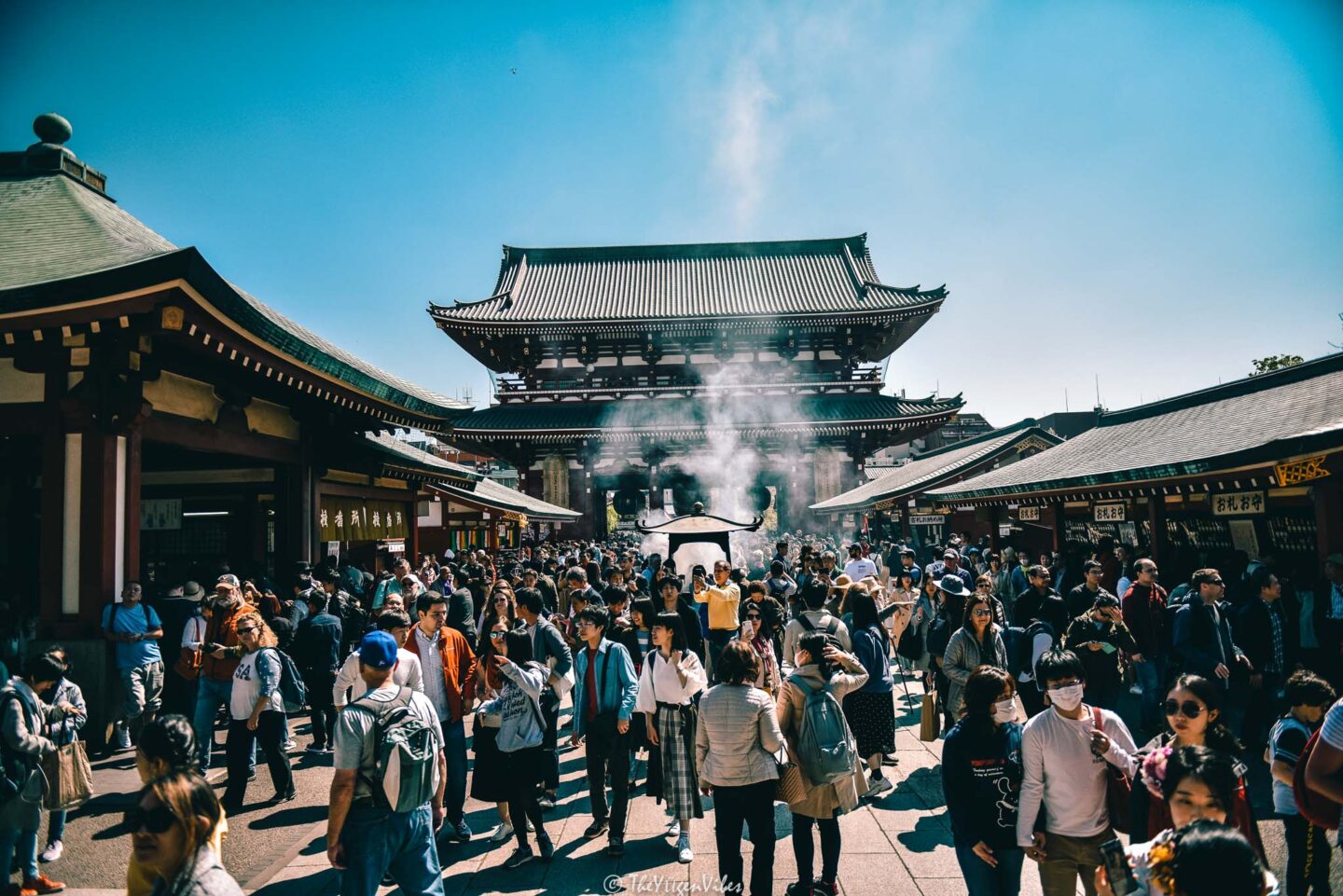
Japan is intoxicating and it made us fall in love with it. The short span of eleven days just went in a breeze. We had four days to spend in Tokyo, split between the beginning and at the end of our trip. We always hear the name of Tokyo being taken along with metropolitan cities like London, Paris and Newyork but Tokyo is much more than just a city.
Tokyo is a vibe, it’s a feeling which is hard to put into words. There’s so much to see, explore and feel. Layers underneath layers, Tokyo has infinite experiences to offer. It’s nearly impossible to explore everything in just one visit but take it easy and just go with the flow and be a part of the sights and sounds.
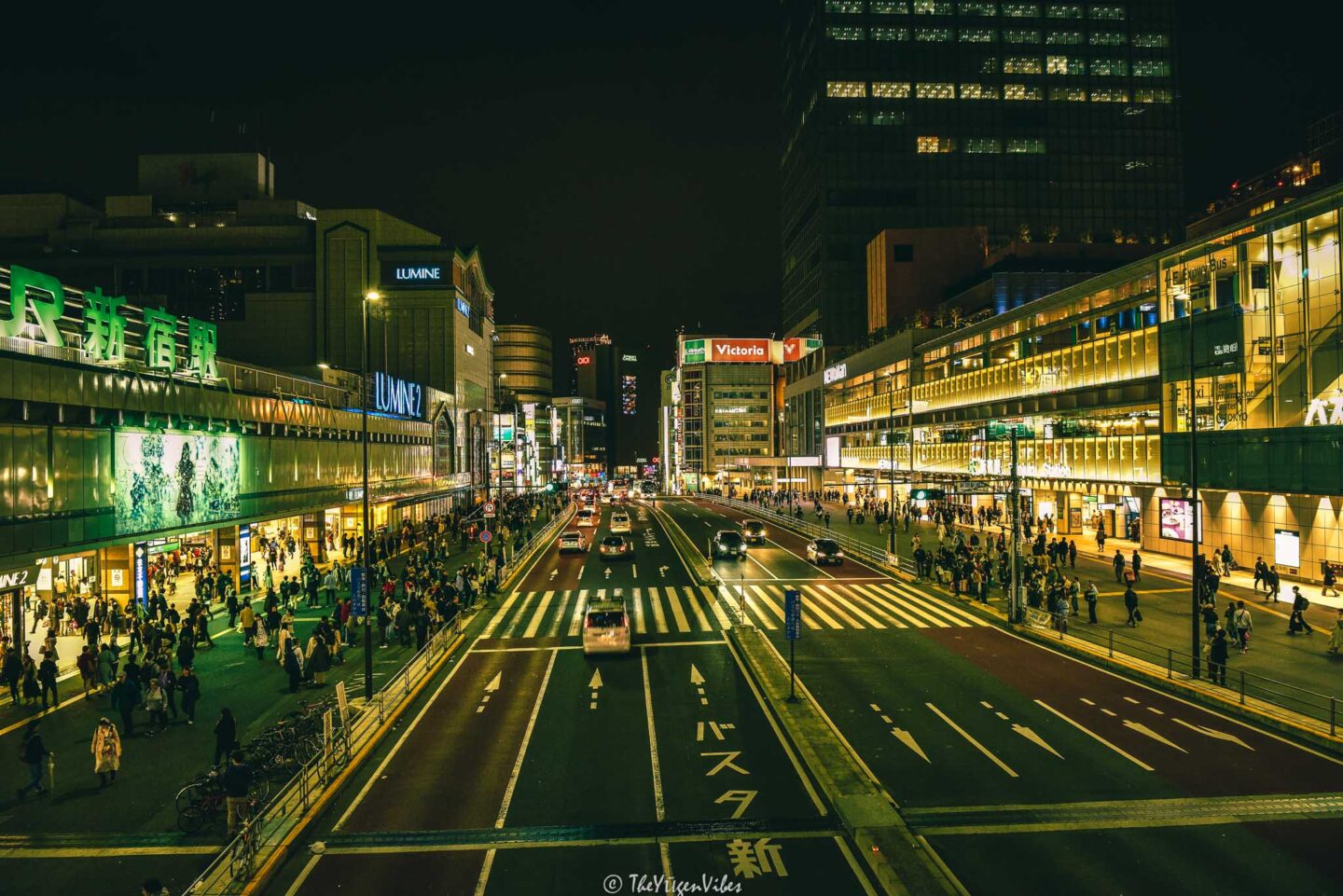
We too were guilty of being over ambitious for not taking the chilly Tokyo spring and jetlag seriously. This negligence did cost us one whole day as I was down with fever. We all somehow passed out for more than 20 hours at a stretch 😉 Nevertheless no complaints, we had an absolutely amazing time in Tokyo. So let’s dive into making some Yūgen memories for life 🙂 Are you in search of some travel/pictorial inspo to visit Japan? See our post 21 Photos to Inspire You to Visit Japan
We flew from London Heathrow to Tokyo Haneda airport and after a 12 hour flight, landed at 7 in the morning. Haneda airport is located pretty much in the city. After collecting our luggage and pre booked Wi-fi device, we boarded our pre booked bus to our hotel.
Haneda Airport to Tokyo City Transfers
By Taxi – It will take around 30 minutes and cost £ 40- 50 (¥ 5,600 – 6,800). It’s the most expensive way to reach the city centre. The fare is increased by 20% during night hours.
By Train or Monorail – The Keikyu Railway train will cost you £ 2.95 (¥ 410) and will take you to Tokyo Shinagawa station in just 13 minutes.
Tokyo monorail will cost you £ 3.50 (¥ 490) and will also take 13 minutes to reach Tokyo’s Hamamatsucho station. The monorail runs more frequently than the train. Tickets can be purchased inside the arrivals hall from the automatic machines or the ticket booth.
By Bus – Taking the limousine bus is the slowest mode but we found it quite convenient. It’s affordable and the only form of public transport available throughout the night. The tickets will cost £ 6.70 (¥ 930) but the final cost will depend upon your final destination in Tokyo. The journey will take around 45 minutes depending upon traffic. The best part is the limousine bus makes stops at all the major hotels and stations in Tokyo which is quite convenient. Tickets can be booked online on their own website here. Or you can also buy the tickets at the sales counter in terminal 2F.
Our first three nights in Tokyo were booked at Shinjuku Washington Hotel. It was just an average hotel but the location was great. The staff were immensely polite and helpful. Tokyo gets heavily booked with the swarm of tourists during the sakura season. A big shout out to the fabulous staff at Shinjuku Washington Hotel for helping us out regarding whatever problem we threw their way 😉 We reached our hotel quite early around 11 am and as usual check ins don’t start before 3 pm. So we just left our luggage in the room and went out to explore the neighbourhood. The first restaurant which we had shortlisted, Mr Farmer, happened to be quite near and we had lunch there.
After a little while of exploring the completely new world and streets of Tokyo, we went back to our hotel. One little nap later, we got ready again. We had our tickets booked for Tokyo Skytree that evening.
Tokyo skytree
Tokyo Skytree is Japan’s tallest structure and it offers panoramic views of the city. We wanted to see Tokyo’s skyline at night time and no doubt the views were stunning. The 360 degree views of the shimmering city lights is sure to take your breath away.


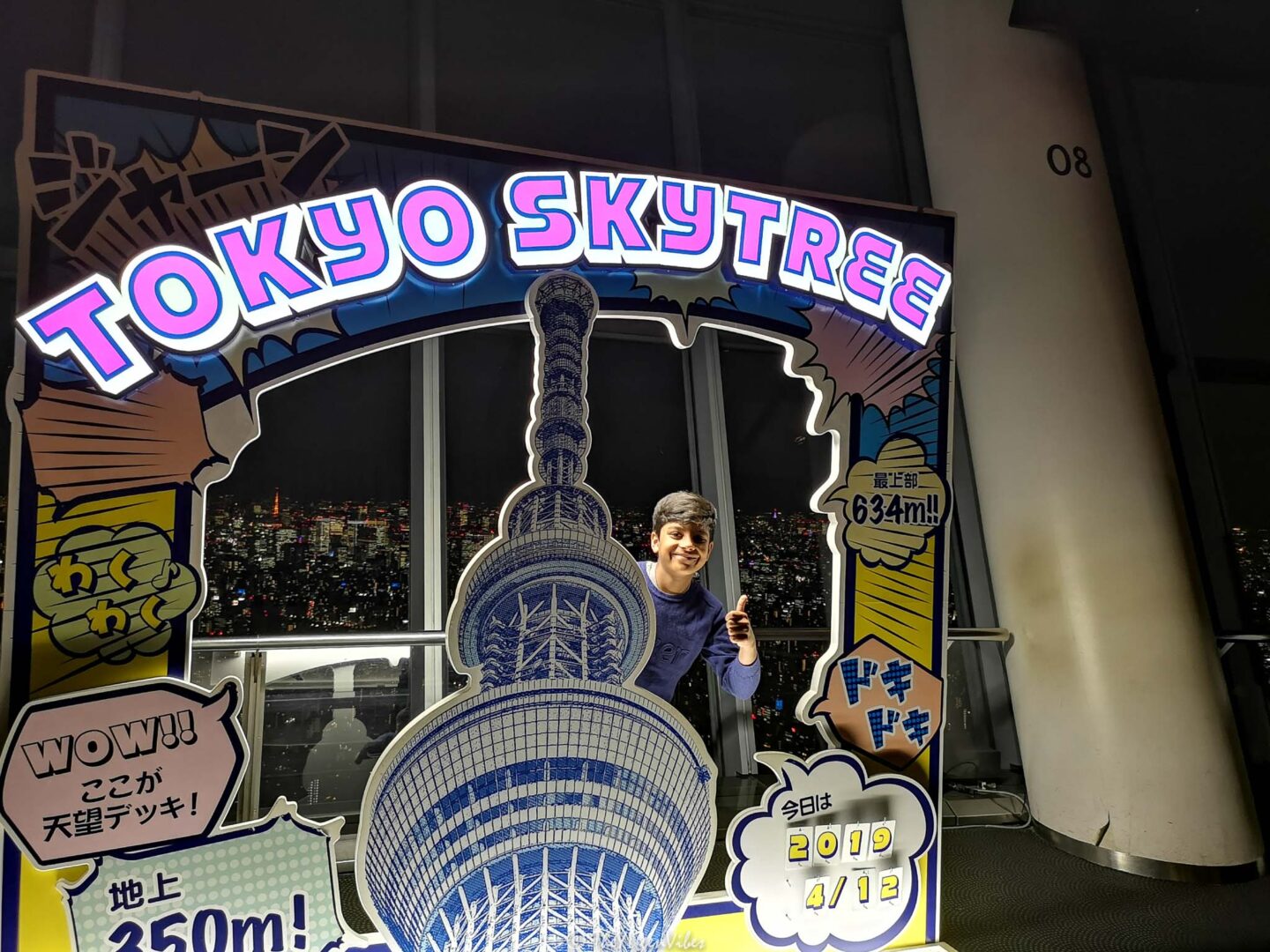
As we had already been on top of Eiffel Tower, Rockefeller Centre, Empire State Building and Burj Khalifa, we were not hoping to be this mesmerised. As we had pre booked our tickets, we were allocated a specific time to visit. We purchased our tickets online from here. The discount was good and there was even a 24 hour cancellation policy as well.
Shinjuku Gyoen Park
Located right in central tokyo, this urban oasis is called the Central park of Tokyo. Incorporating three landscape styles, namely Japanese, French and English garden, Shinjuku Gyoen park is absolutely stunning. Our main agenda to visit here was simply to watch Sakura and it didn’t disappoint. The massive trees heavily laden with flowers was a sight to behold. Though it was the end of sakura season, it still looked magical. We witnessed a few after wedding parties and wedding photoshoots going on against the beautiful backdrop of the sakura. The park is closed on Mondays. Click here to read more about this park.
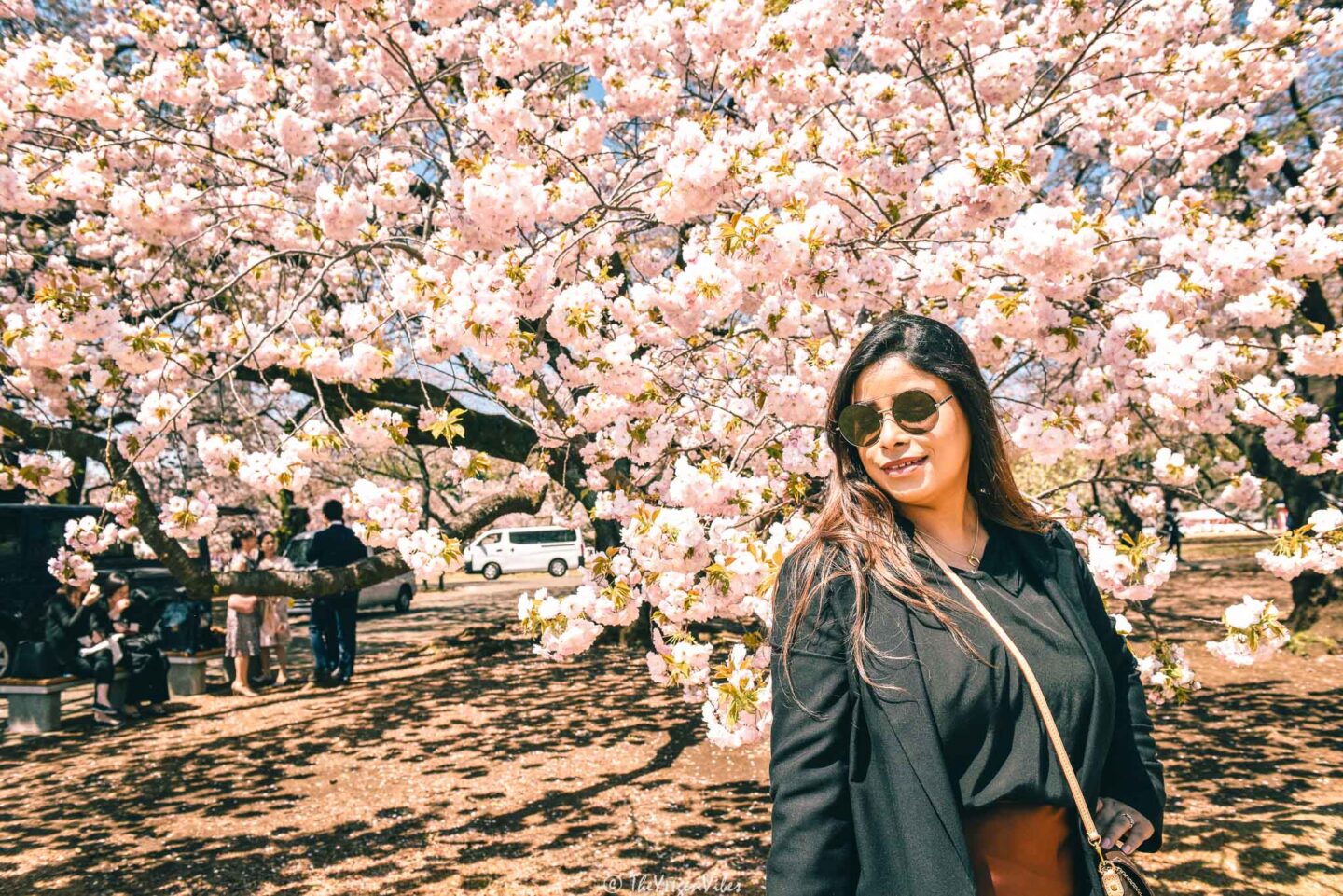
Senso Ji Shrine
Senso Ji Shrine is one of the most grand and imposing shrines in Tokyo. Located in Asakusa district, Sensoji has preserved the feel of old Tokyo very well. The temple was buzzing with tourists and most of them were clad in traditional Japanese costumes with a hired professional photographer tagging along.
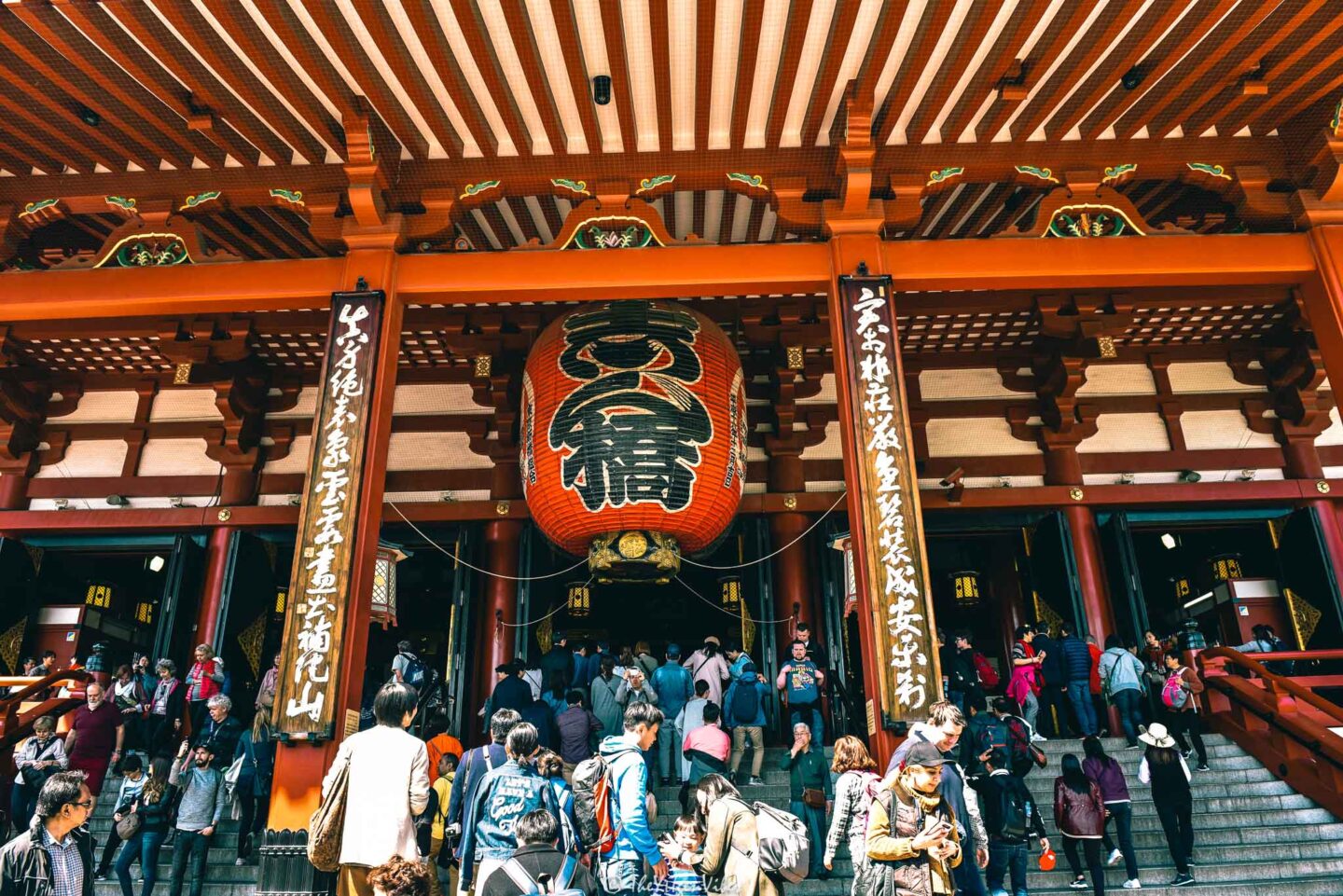
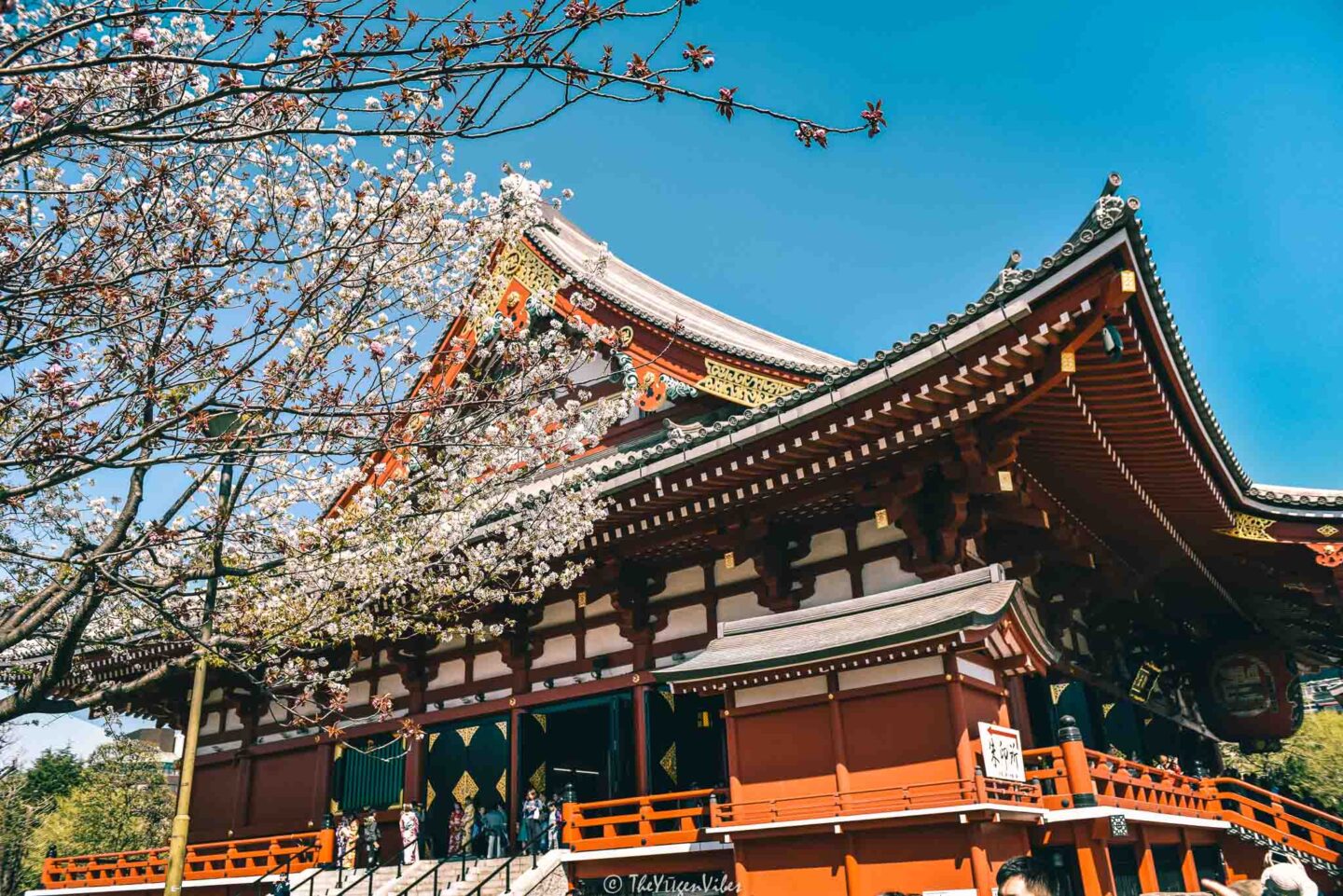
The historical street of Nakamise leads from the outer gate of the temple to the inner gate. This shopping street is lined with numerous shops selling antiques, souvenirs and popular local snacks. We tasted the famous Ningyo-Yaki and Ice cream Monaka (Ice cream sandwich) at Cyouchin-Monaka. If you happen to be a foodie, we would highly recommend taking a food tour in Asakusa. Other popular sweets to try at Nakamise would be Daifuku, Dango and Taiyaki. These regular sweets are usually vegetarian and are made with rice flour and bean paste. We would still recommend checking with the seller for any dietary requirements.
The main temple is in a big compound and regular spiritual prayers and practices go on in the main hall. The rest of the temple was full of people trying to get a peek into the ancient life of Japan such as trying their hands on incense burning or Omikuji.
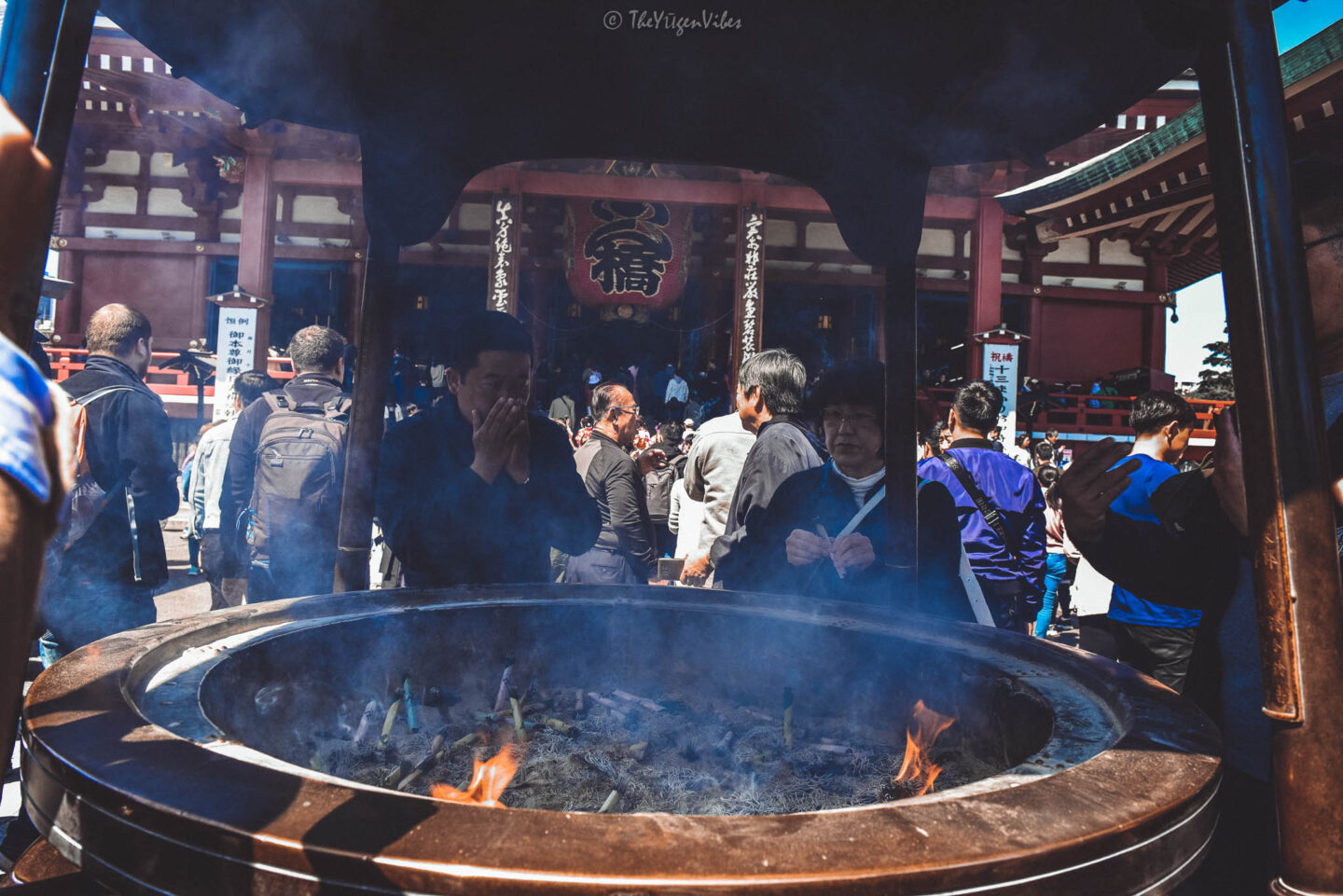
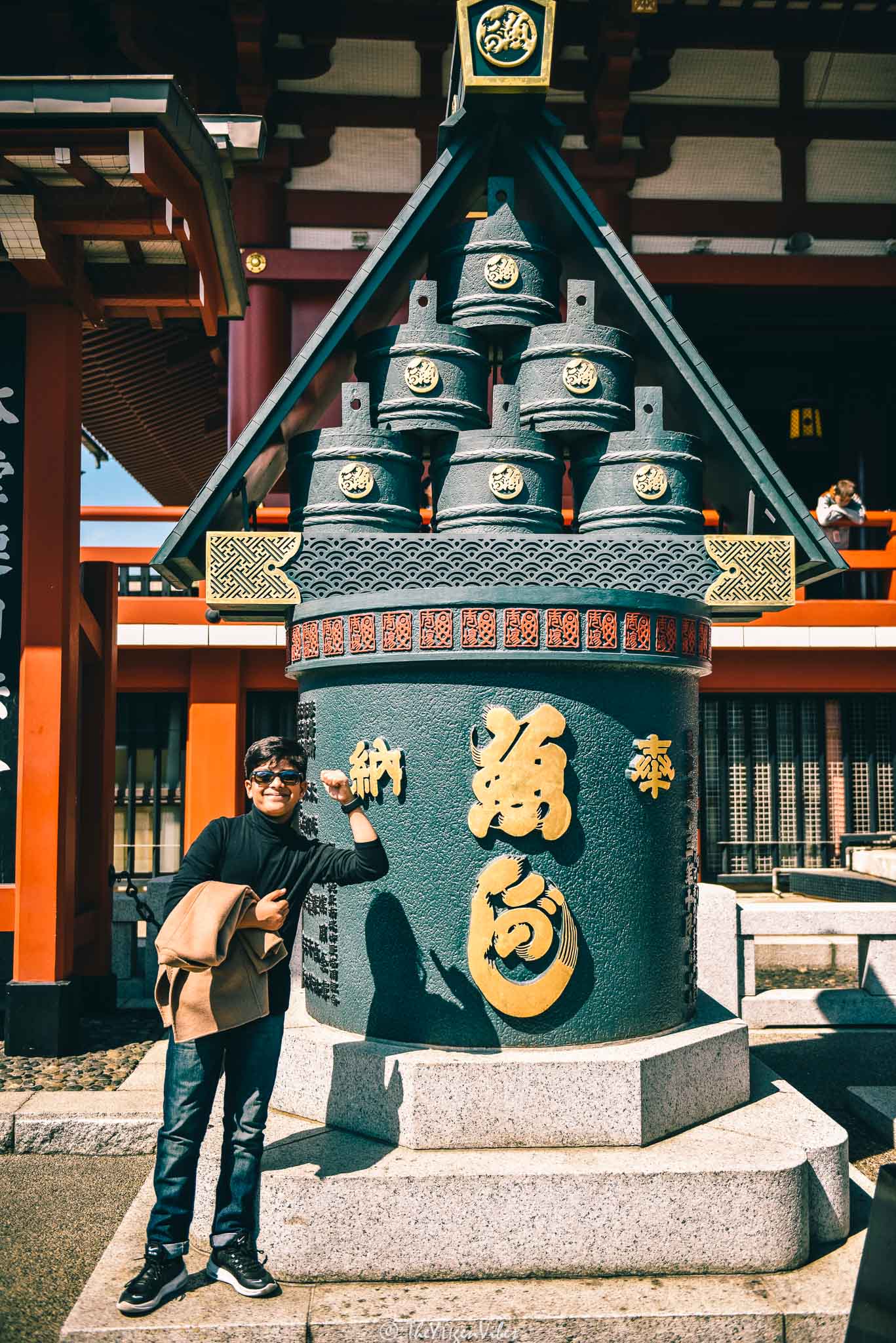

Now Omikuji is something we were really looking forward to. It is an ancient Japanese art of fortune telling very popular at shrines and temples. You just need to make a small donation, pick up the metal canister and jiggle rigorously. Try and shake one bamboo stick out of the canister. Once you shake one out, you will see some japanese numbers written on the side. This number will indicate which drawer you need to open to unlock your fortune. Be careful while matching the number with the drawer or take help of any local if in doubt. After you open the drawer, take the first slip of paper out. Keep your fortune with you if it is a good one. And if it ends in any kind of curse, hang the slip on to the thin metal wires over there which are specially made for this purpose and the curse won’t follow you. Isn’t it interesting 🙂
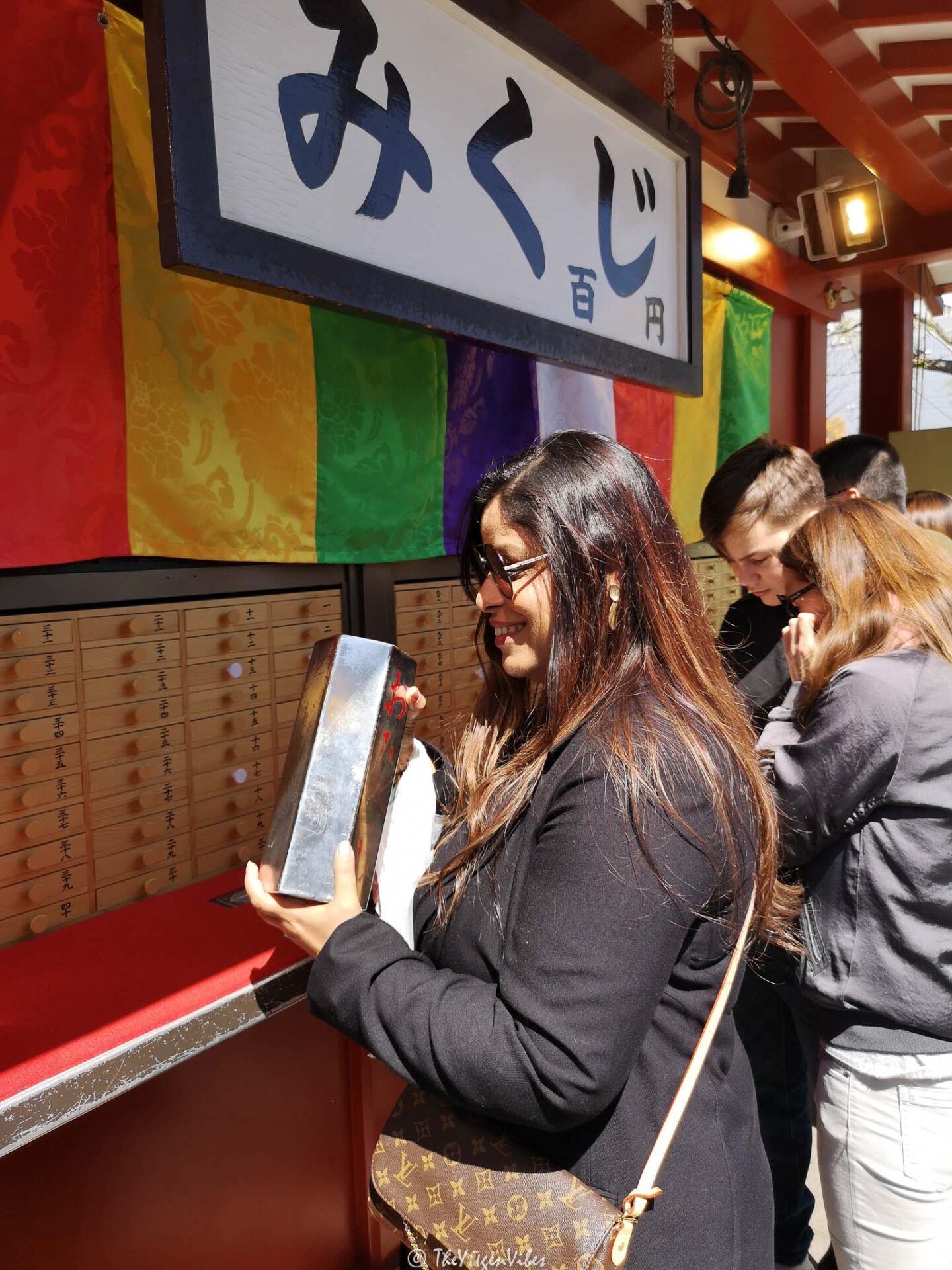
After having a quick stopover for lunch, we explored more of Asakusa’s surroundings.
Late evening we went over to Chidorigafuchi point for a little more Sakura watching. This moat is a part of the Imperial Palace and is quite picturesque. The streets and pavements were all lined with Cherry blossoms and looked surreal in the evening.
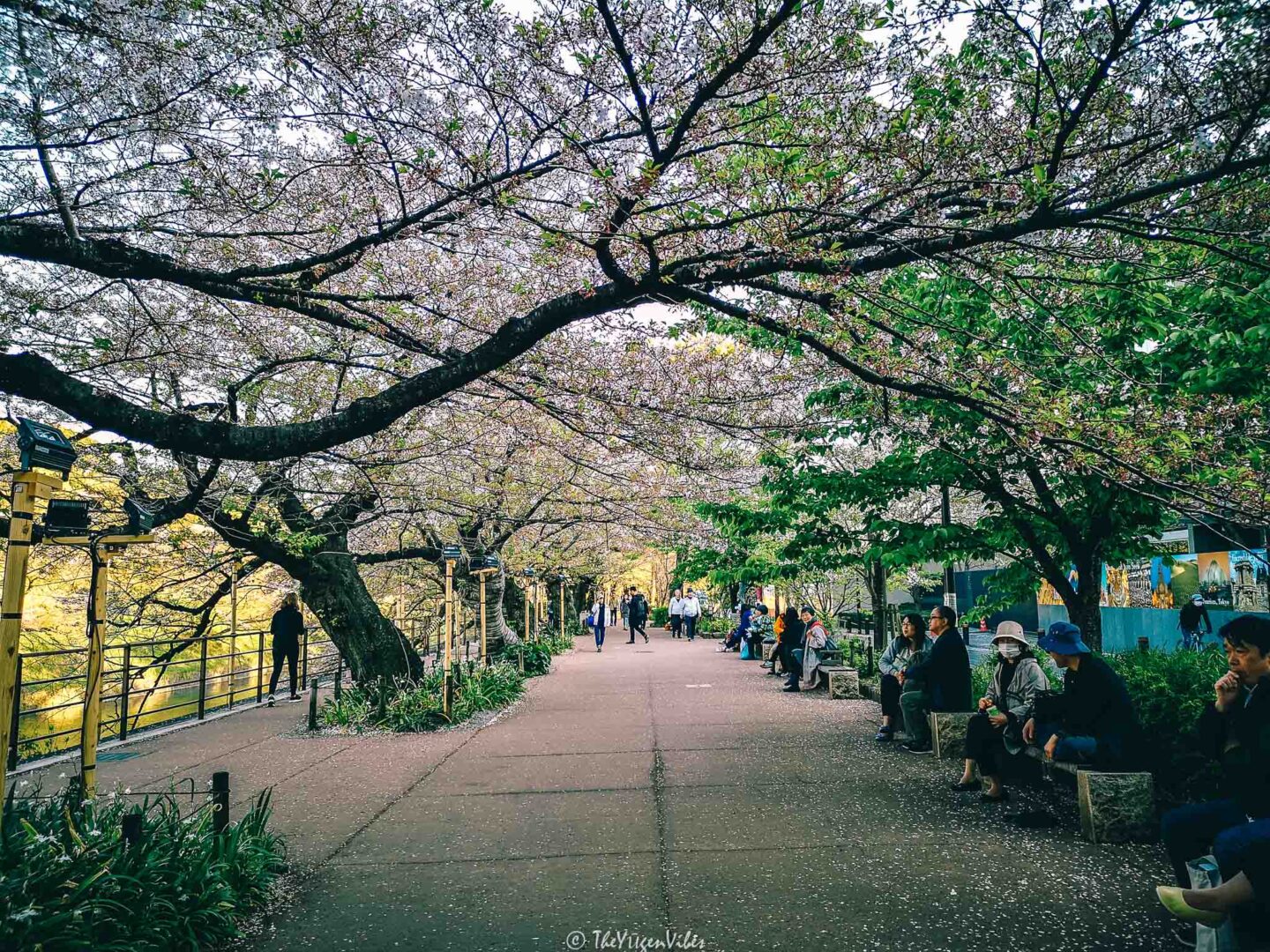
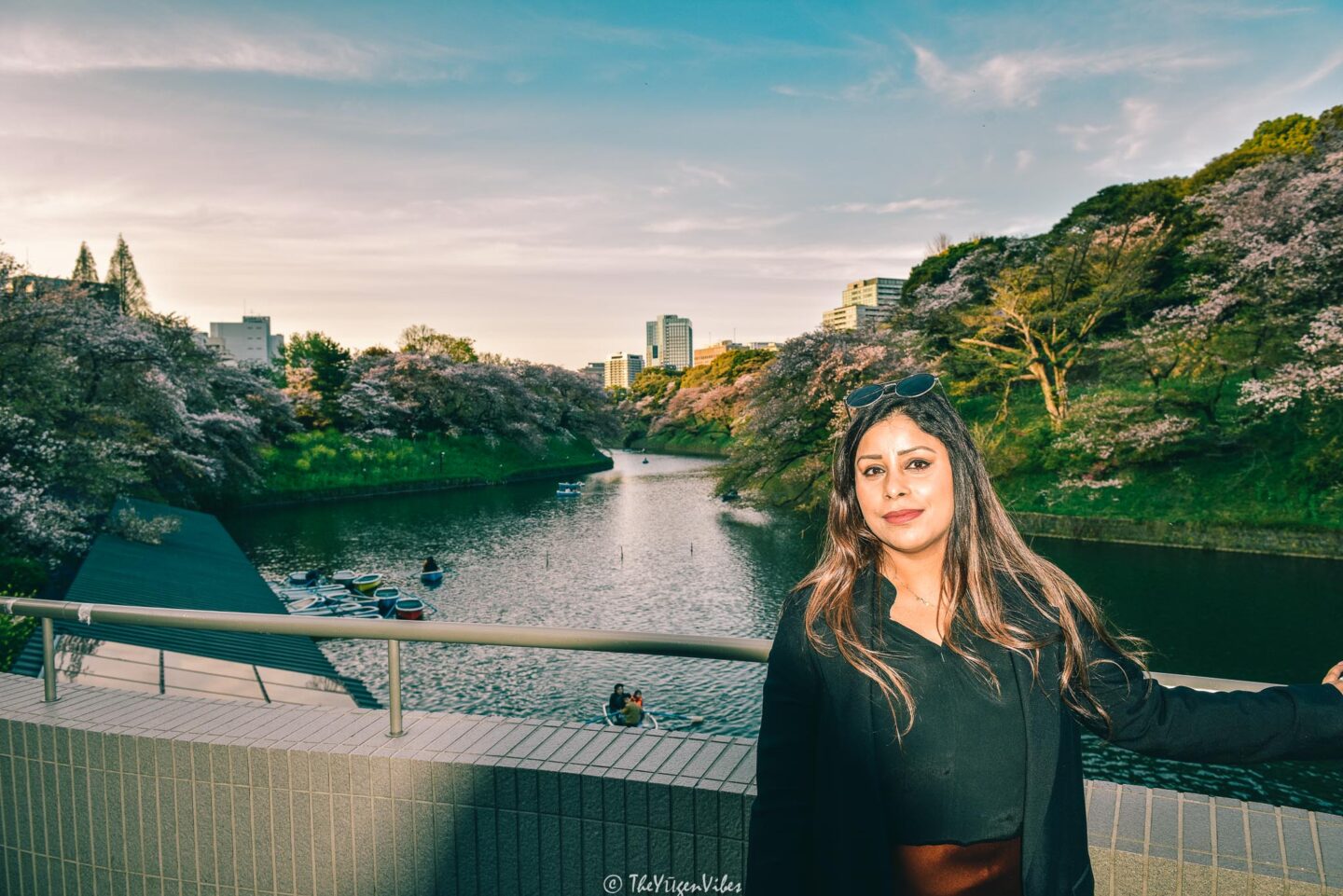
Harajaku and Takeshita Street
Ah what a fun it was to be in Harajaku in the evening!! This district was busy and alive with most of the young population and brimming with shoppers and tourists. We won’t deny that as much as we love our quiet escapes, we love spending time in the bustling cities too. The famous Takeshita street was flooded with people. There were quirky cafes (popular cat cafes), trendy bars, desert stalls and bubble teas. Harajaku is the centre of kawai (cute) culture and you will notice it everywhere. Just lose yourself in the streets and don’t forget to try those photobooths. The Japanese have taken it to another level. Embrace the Kawai culture if you are up for it. Visit a salon, nail or makeup bar or dress up to be the part. Harajaku is the best place to buy free spirited fashion and accessories. We had an awesome selection of teas, cakes and savoury food in The Double Tall cafe. Highly recommend it. Don’t forget to visit Tokyo Plaza for an amazing photo op. The entrance of this building has geometric shaped mirrors on the ceiling which looks incredible in photos.
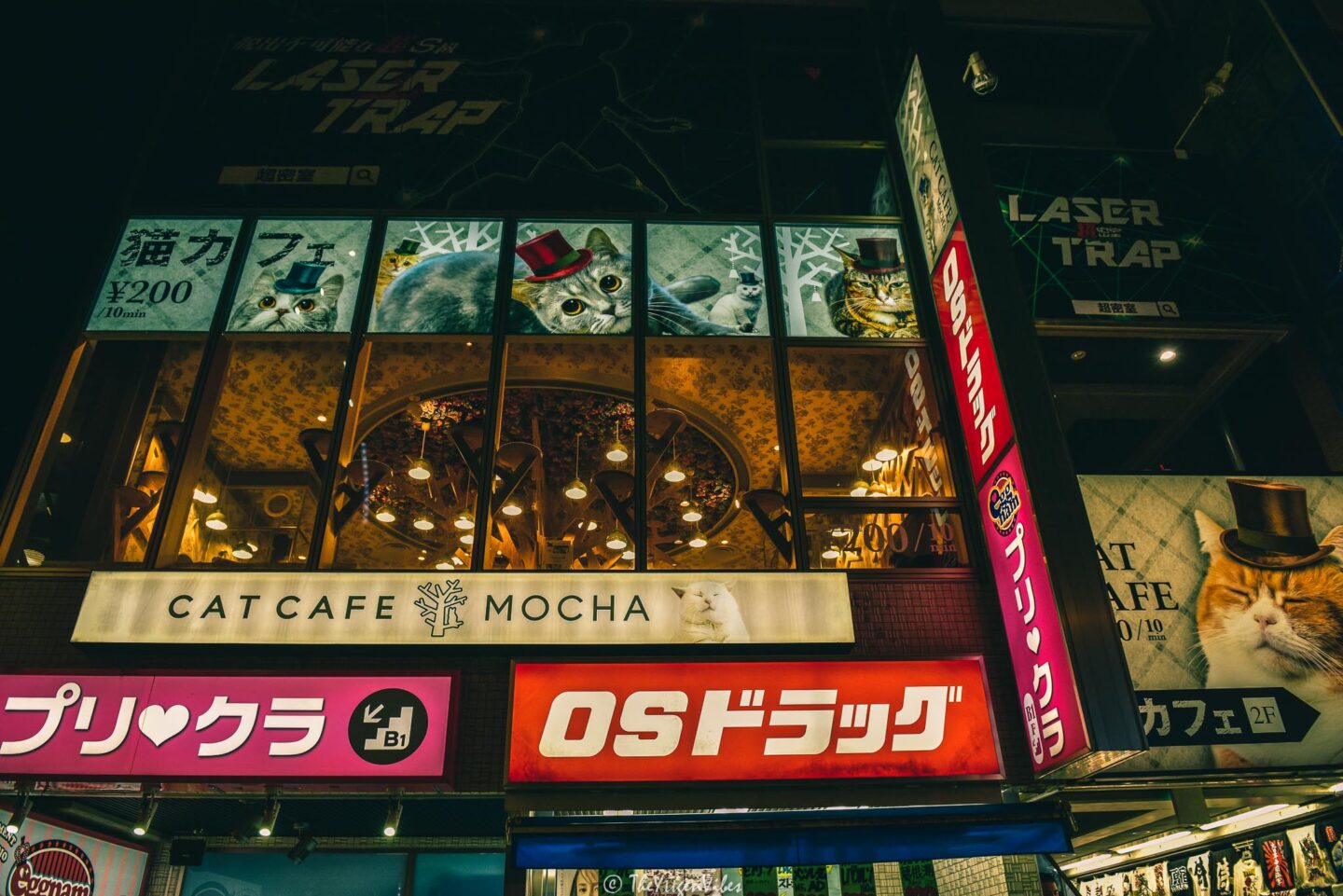

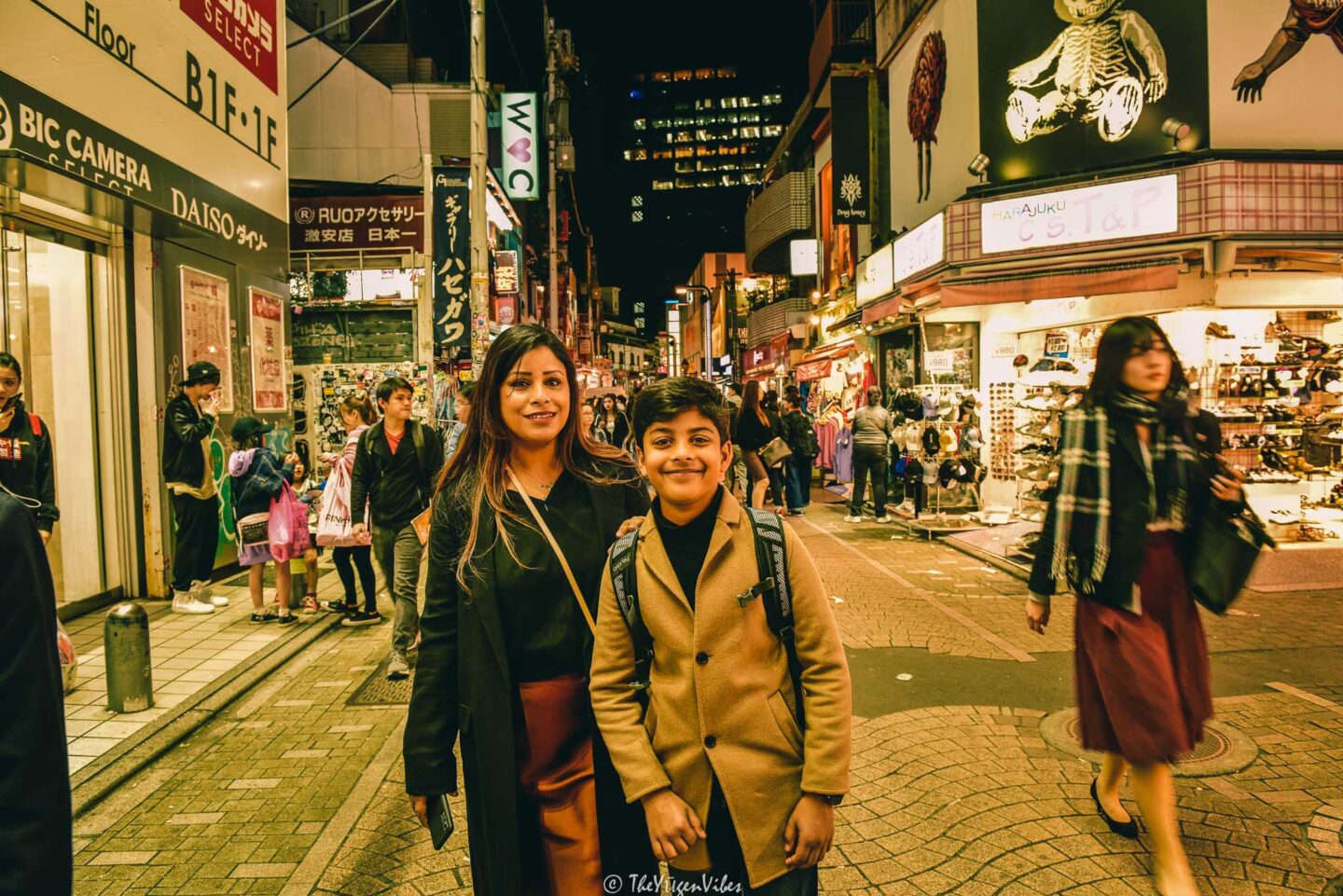
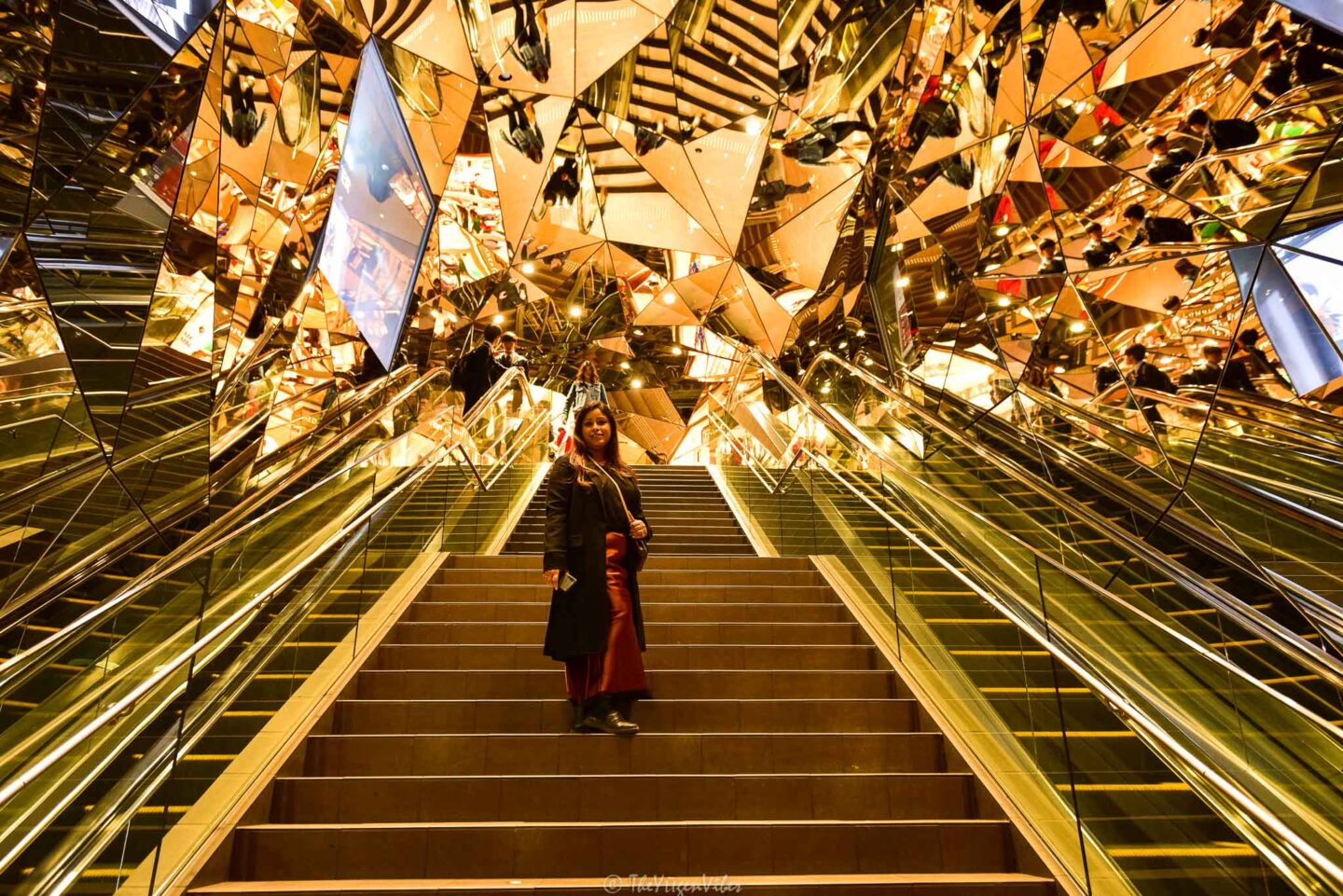
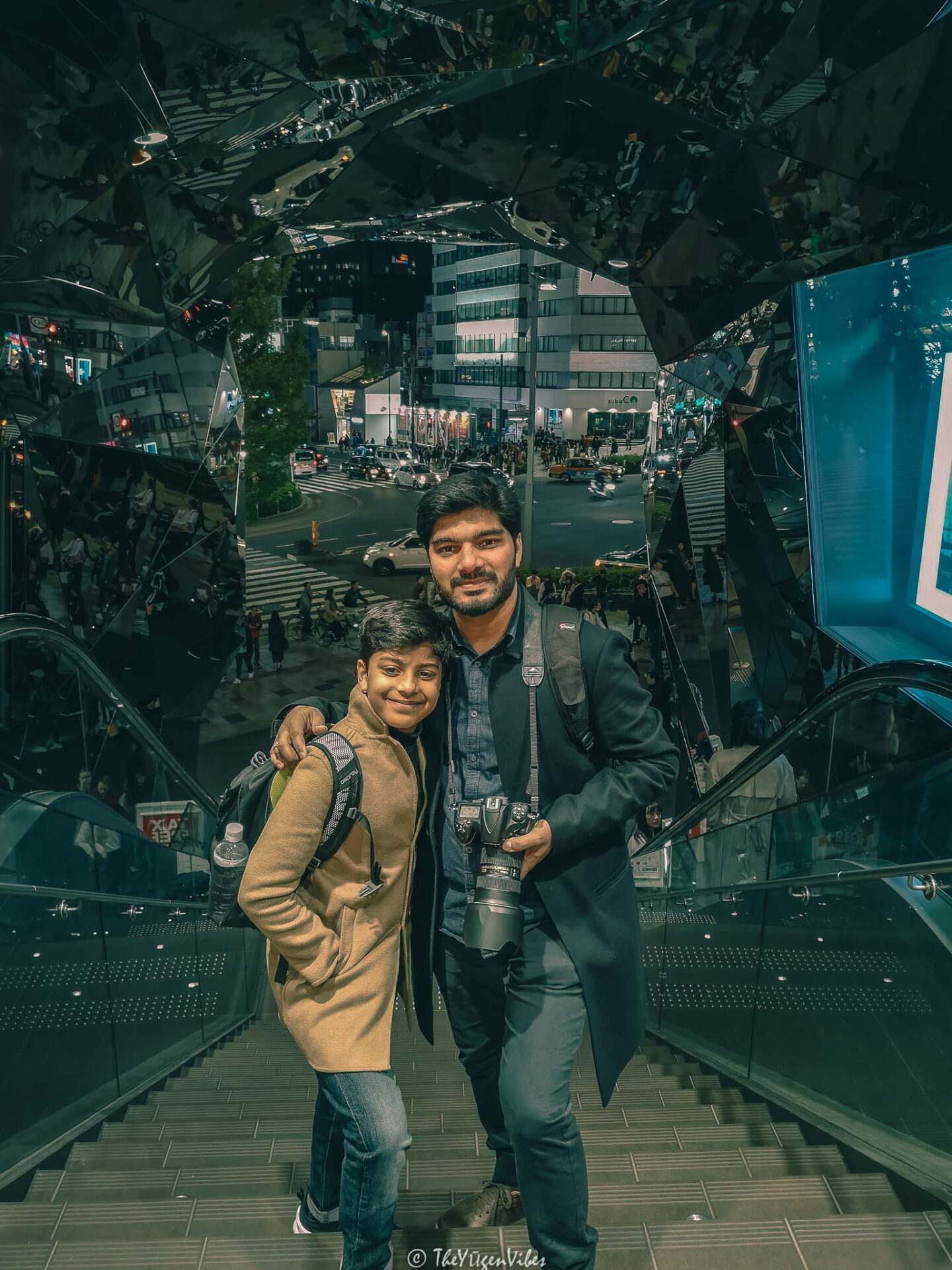
Shibuya Crossing
If Harajaku was bustling then Shibuya was jam packed with people, locals and tourists alike. The energy over there was maddening and the excitement to walk the famous crossing with such a huge multitude number of people was extreme. Most of the people were tourists who were busy posing, photographing or running for their lives when the traffic lights hit green 😉 With the massive digital hoardings around, it can be easily compared to Piccadilly Circus (London) or Times Square (New York).
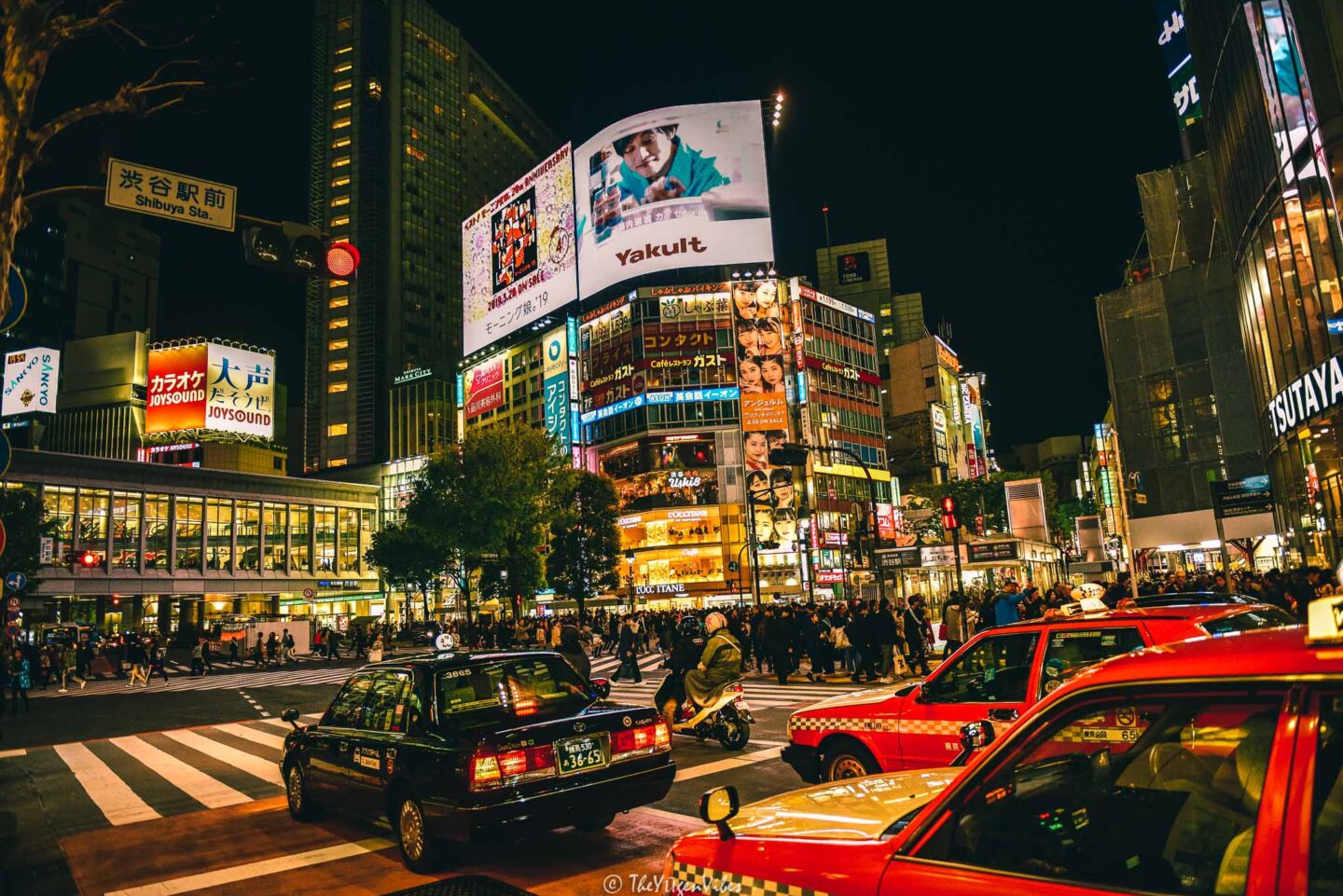
The best spot to photograph the Shibuya scramble would be the nearest Starbucks. Grab a coffee and pick one seat by the glass wall. Another popular option is to visit Mag’s Park, terrace of the nearby Magnet building. There’s an admission fee of ¥ 300 but you will get uninterrupted views of the scramble. There’s even an epic photo opportunity with the overhead remote camera which will set you back another ¥ 1000. One attempt will last 100 seconds which is plenty of time for some creative selfies (which we realised later 😉 ) In nutshell it was an exhilarating experience watching the busiest intersection in the world.
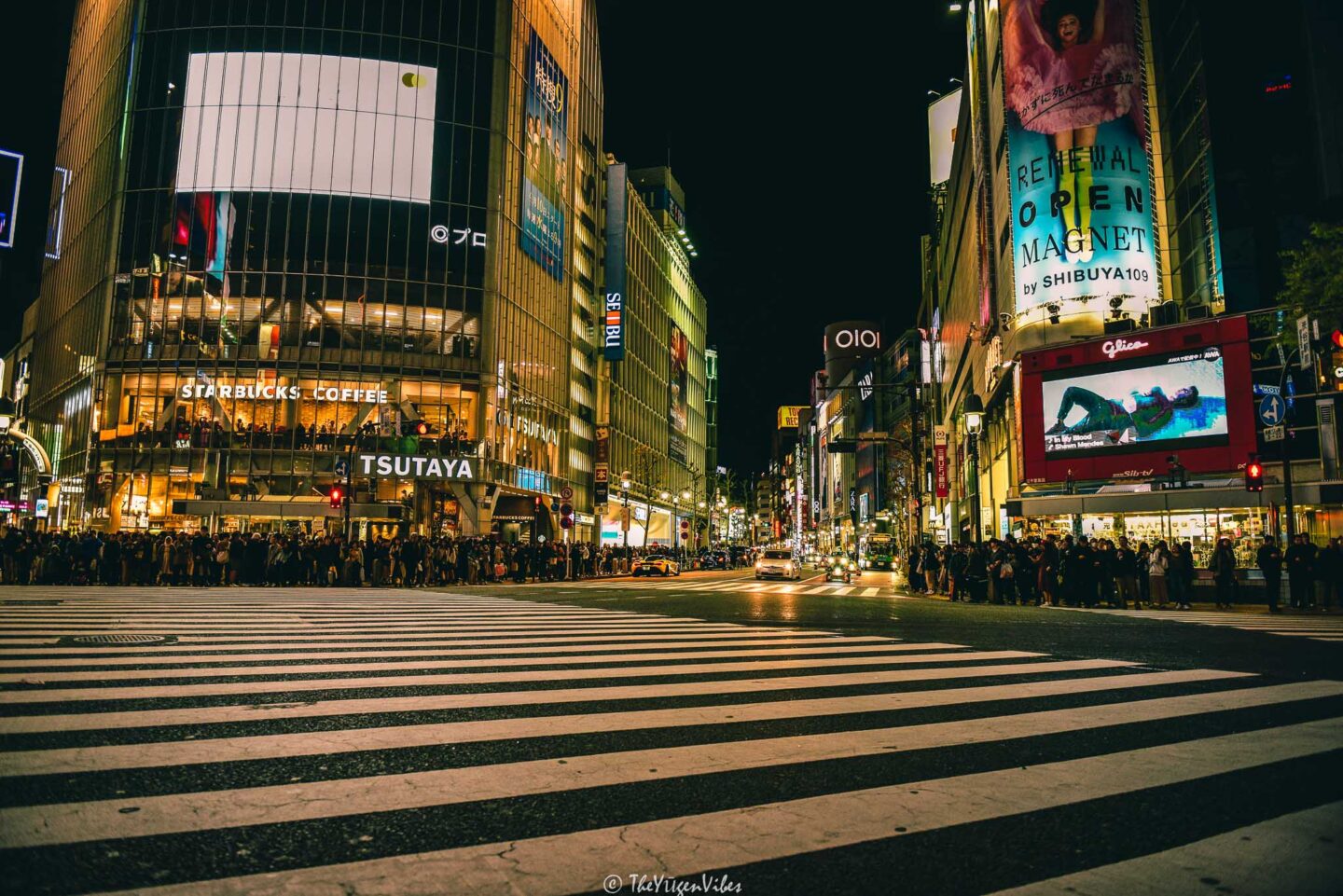
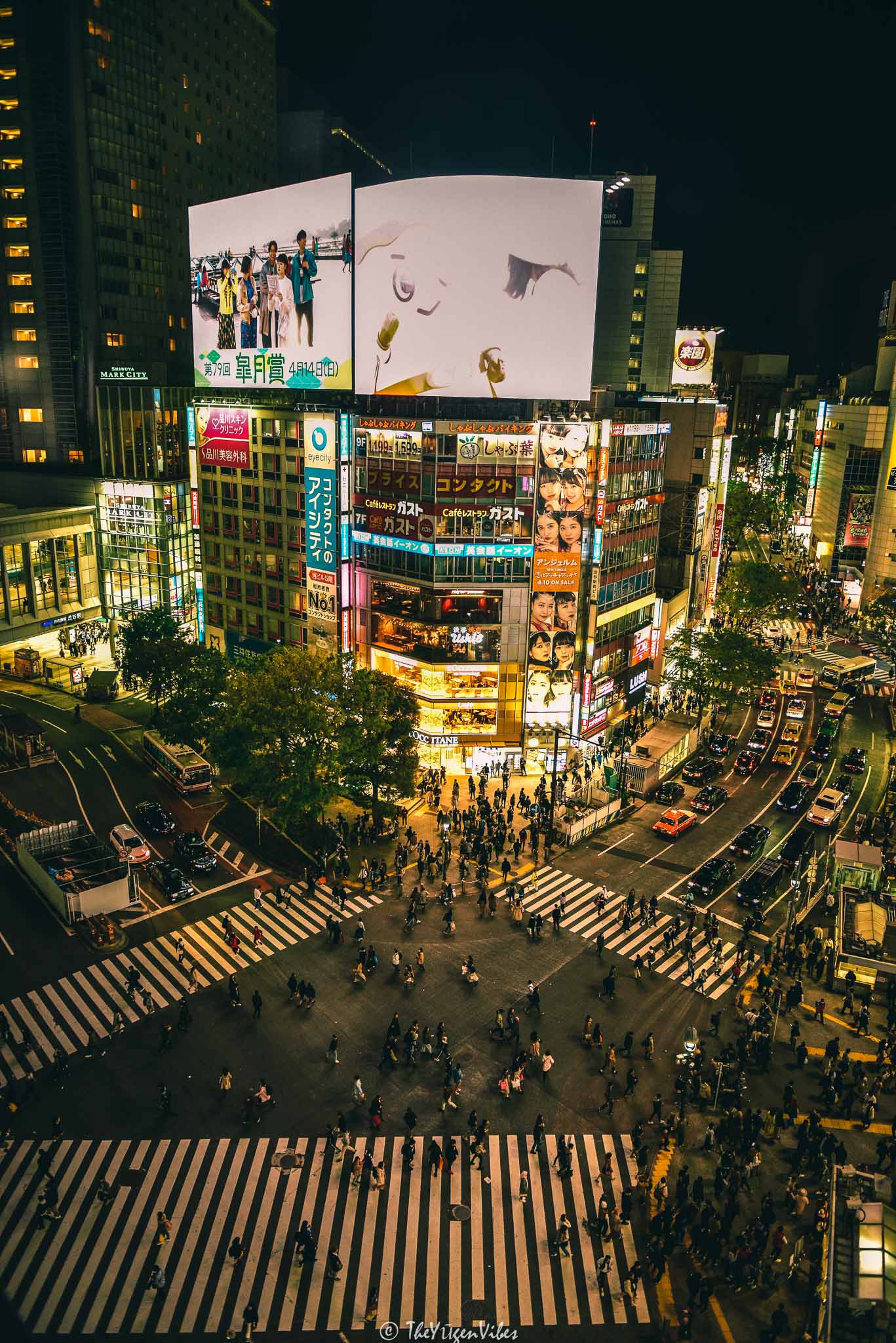
Few Pointers
- For travelling in Tokyo, we had a mix of subway and taxis. Subways can feel a little overwhelming at first but you will easily get the hang of it. Subway is convenient and inexpensive. Rather than purchasing tickets every time, you can buy prepaid cards called Pasmo and Suica. You will require a ¥ 500 deposit to purchase one. Taxis on the other hand are quite convenient but expensive. Once you enter the taxi, the starting price is ¥ 430.00 and it charges ¥ 410.00 every kilometer after that.
- It’s always recommended to pre book your Wi-fi device in advance otherwise it’s going to cost a lot more once you enter Japan. We have a separate post dedicated to it. Please read 11 Tips For Your First Trip to Japan.
- Google Translator was our best friend while in Japan. So, don’t forget to install it on your phone.
- Pre booking your excursion tickets will always come handy.
An Interesting Story
Our third day in Tokyo was a little unproductive as I was down with high temperature. For one day and two nights, we were simply locked in our room. As we had already hired a car for our Mount Fuji excursion, it had to remain in the parking lot for this duration. We were aware that we were in for a big problem as parking charges in Tokyo are crazy. Our hotel parking lot was already full so we opted for parking at the closest Tokyo Metropolitan Government building (Tocho). And as we were dreading, our final bill came out at ¥ 22,000. As much as we were in shock, the parking guard was left open mouthed as well. As he kindly asked us the reason for this big amount, we explained the whole story. We were in for a big surprise when he declared there’s no need to pay the charges and treat it as a gift from his country. He would not take it otherwise even when we insisted on paying. We were literally so touched by this kind old man’s gesture towards us. Kindness and empathy are indeed great virtues and this man gave us one more Yūgen moment to us 🙂
Stay tuned for some more interesting and Yūgen worthy blogs on Japan 🙂
Have you been to Japan? Let us know about your experiences!!
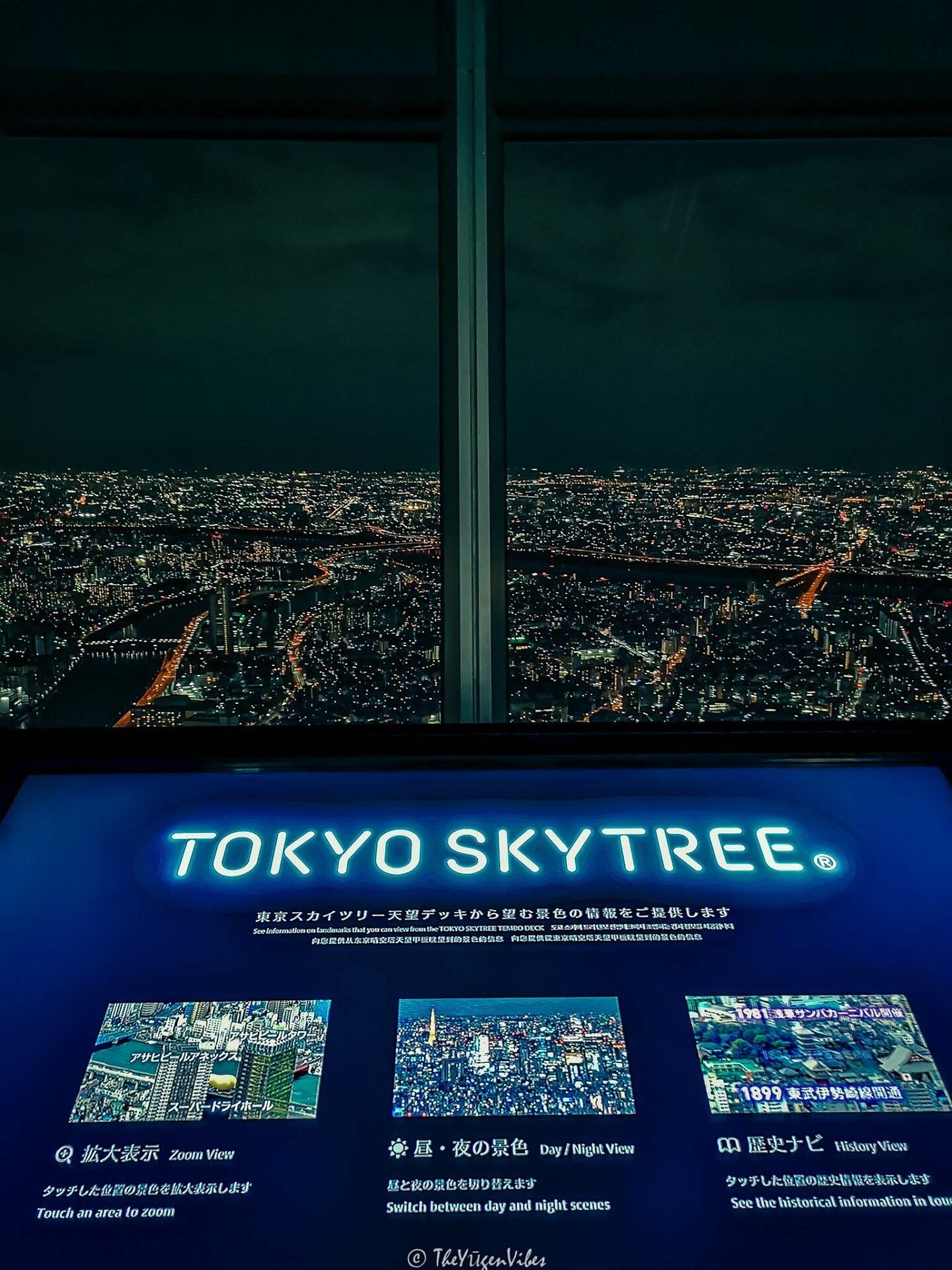
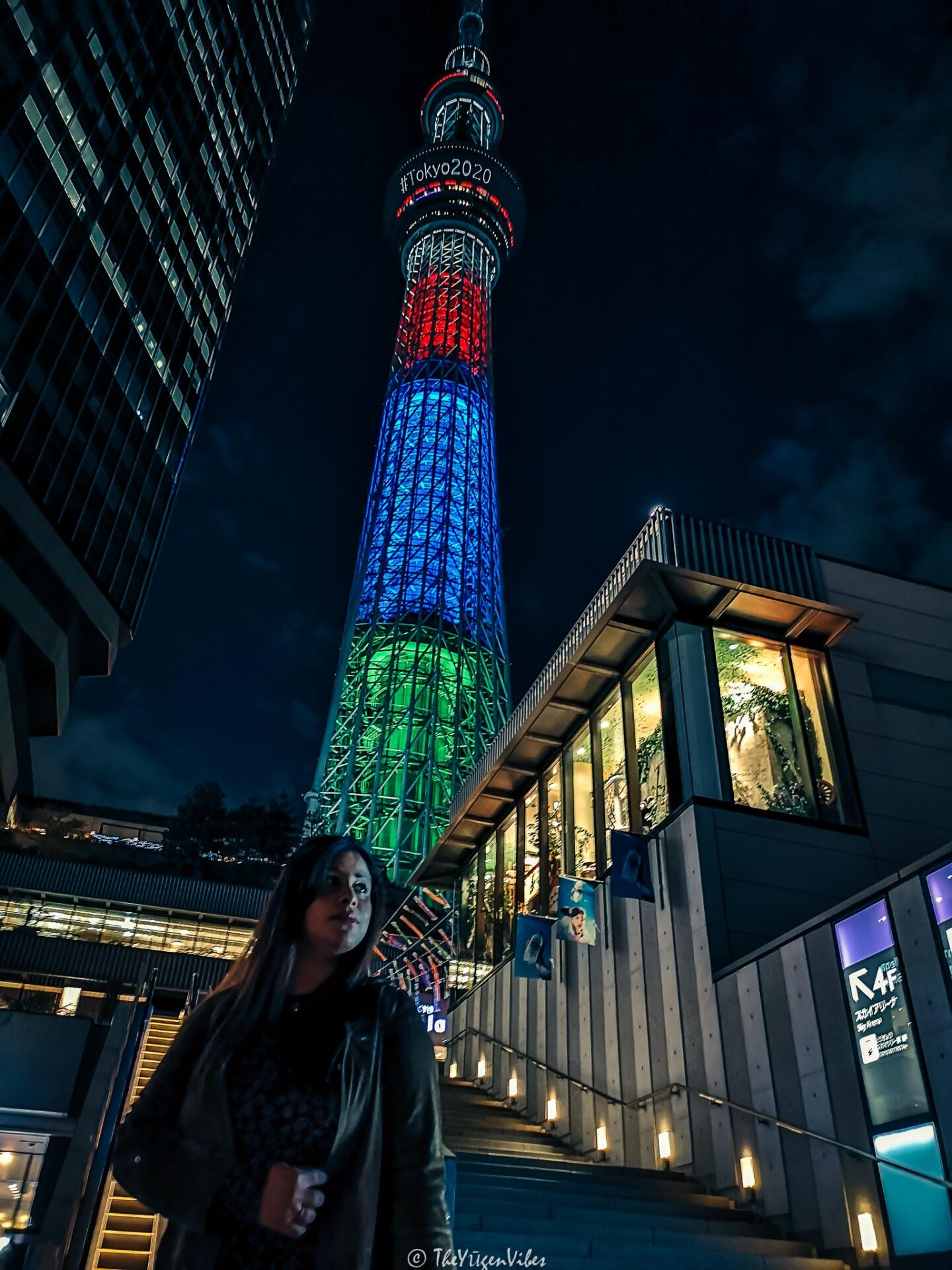
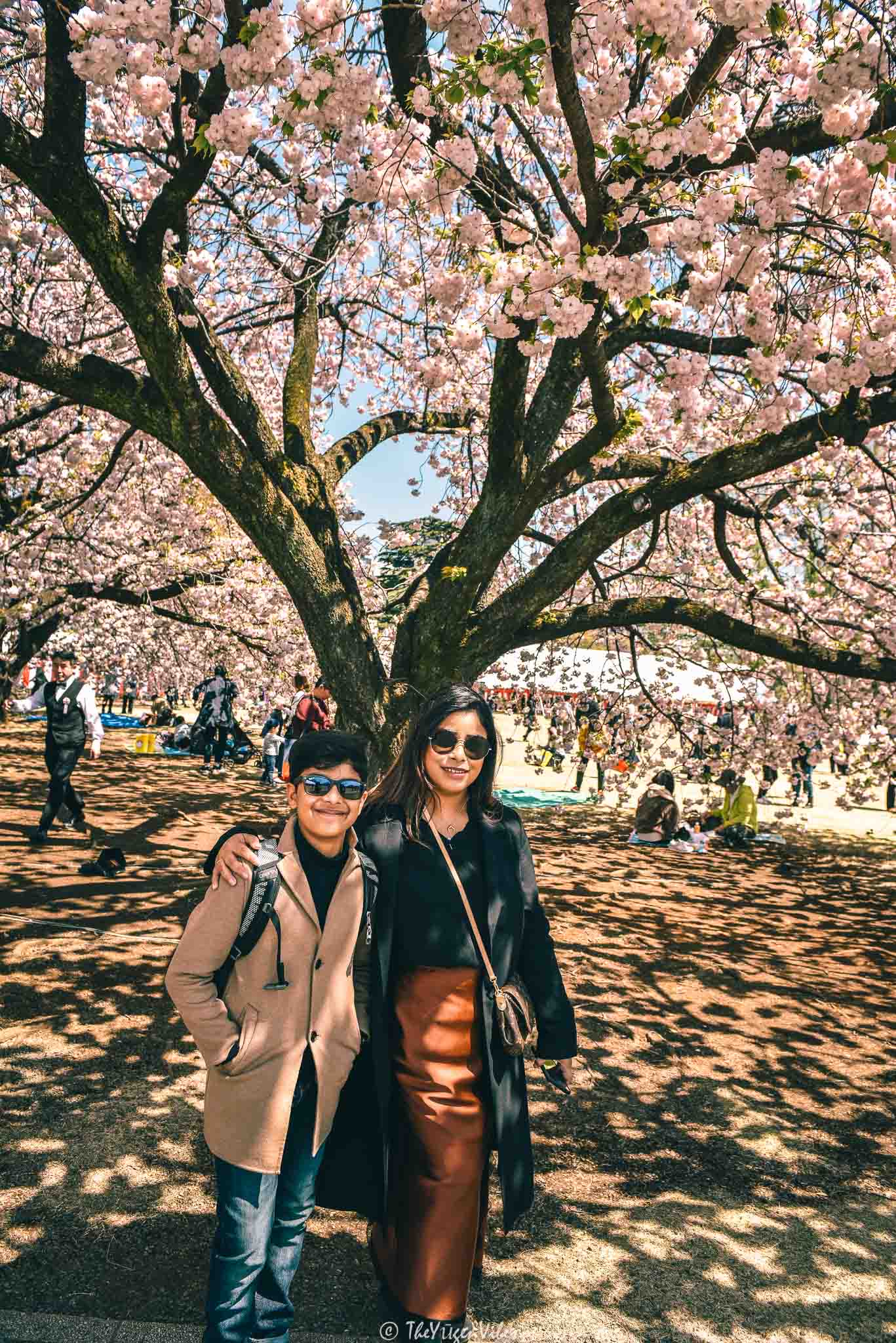
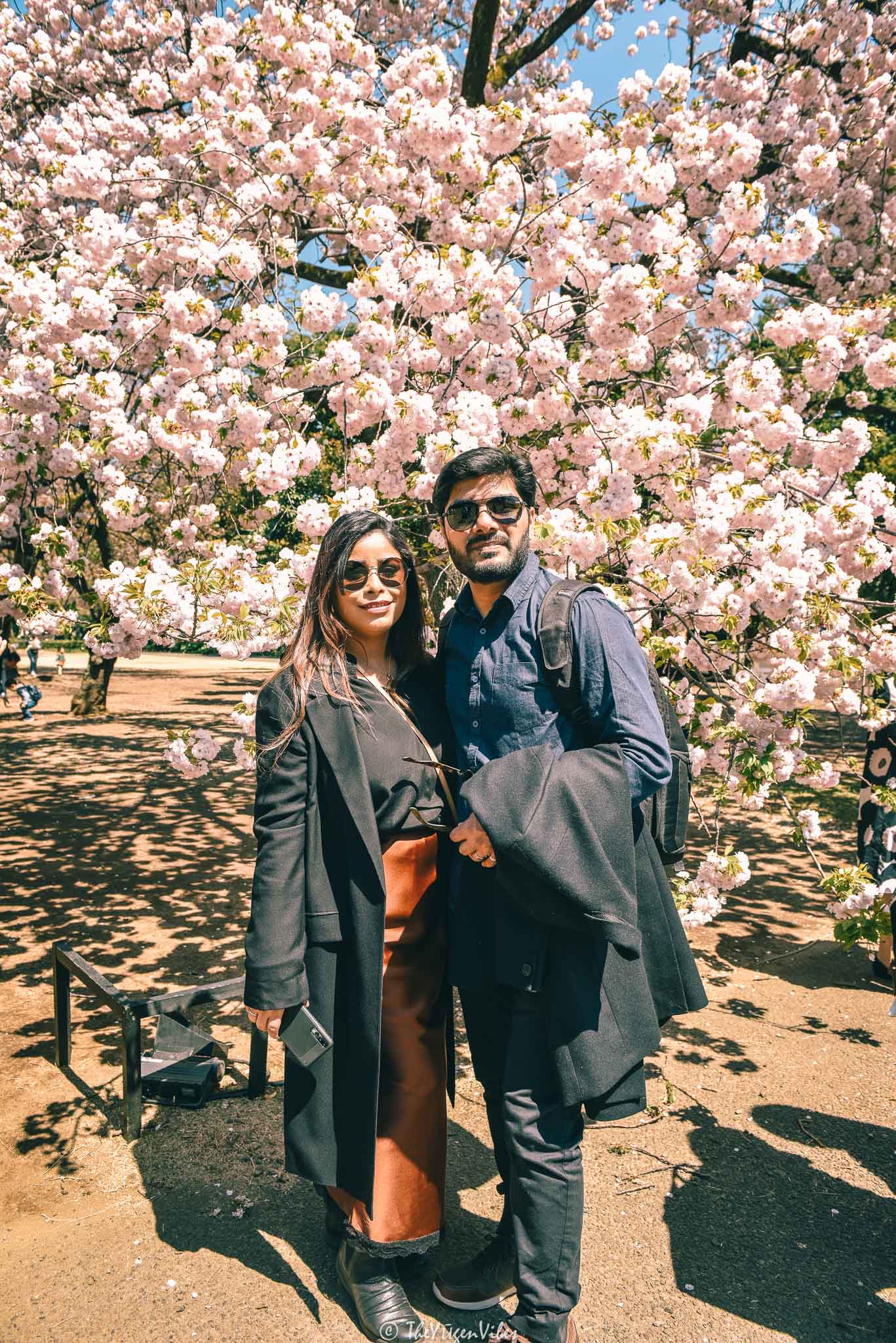
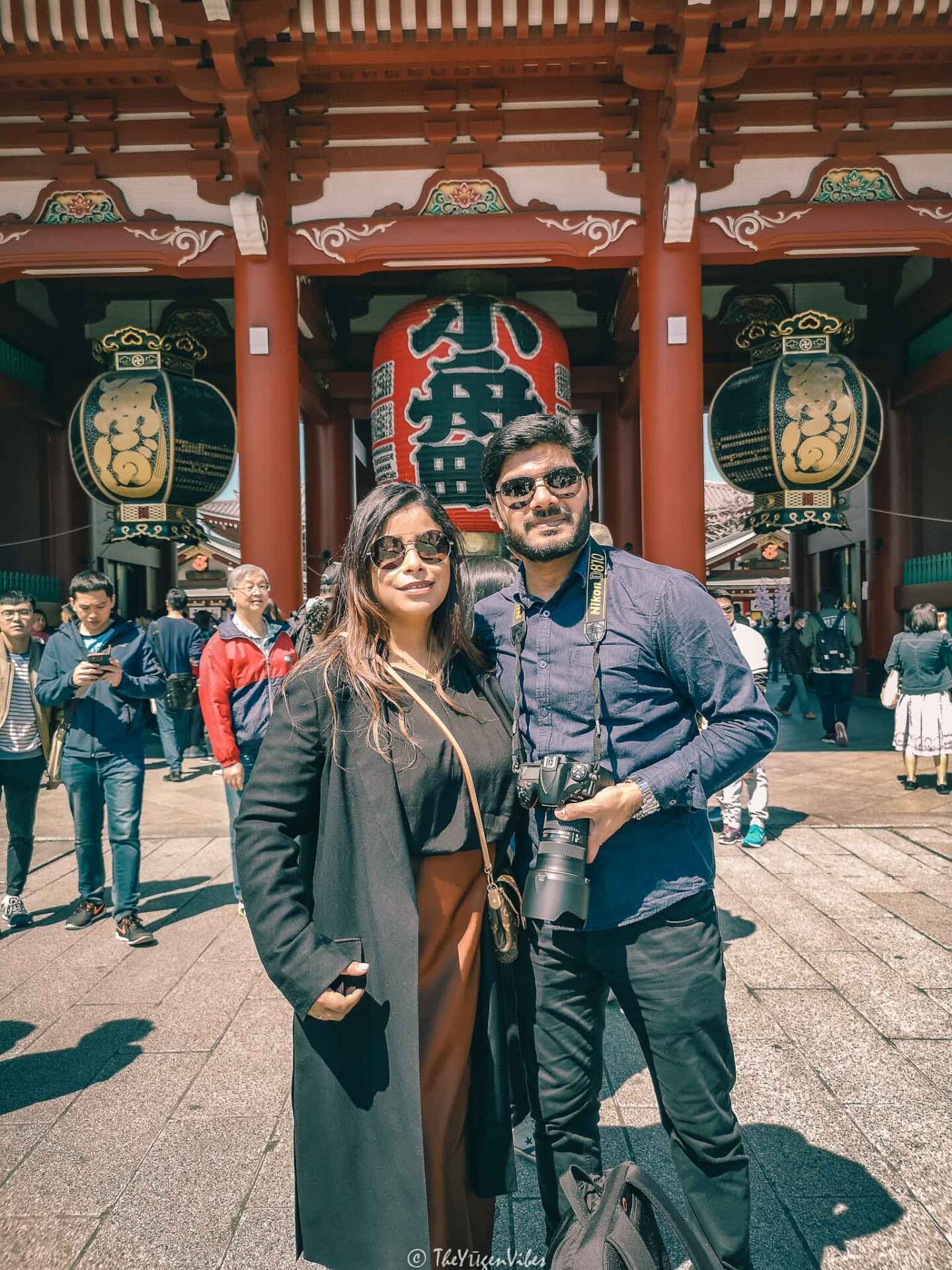
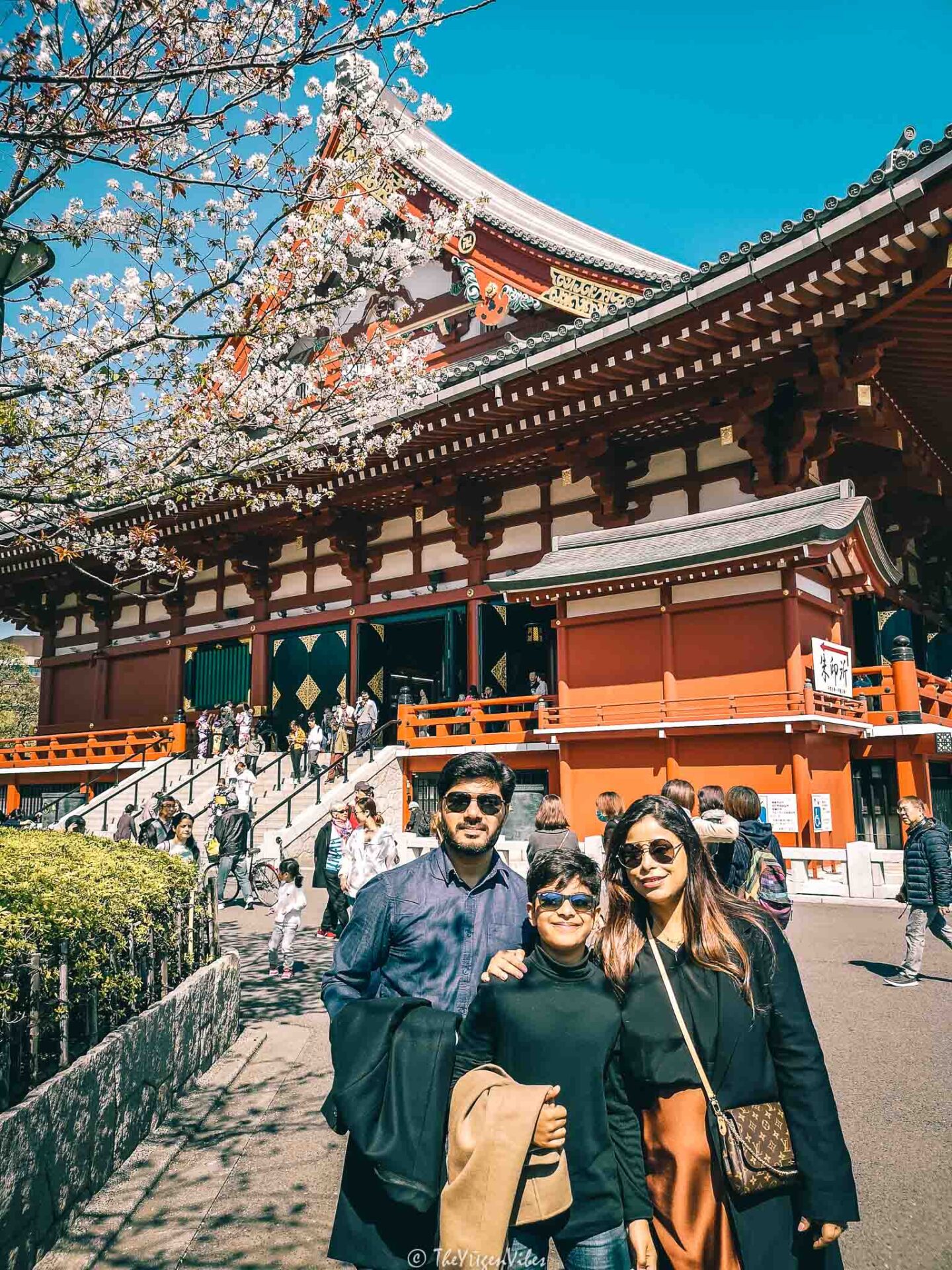
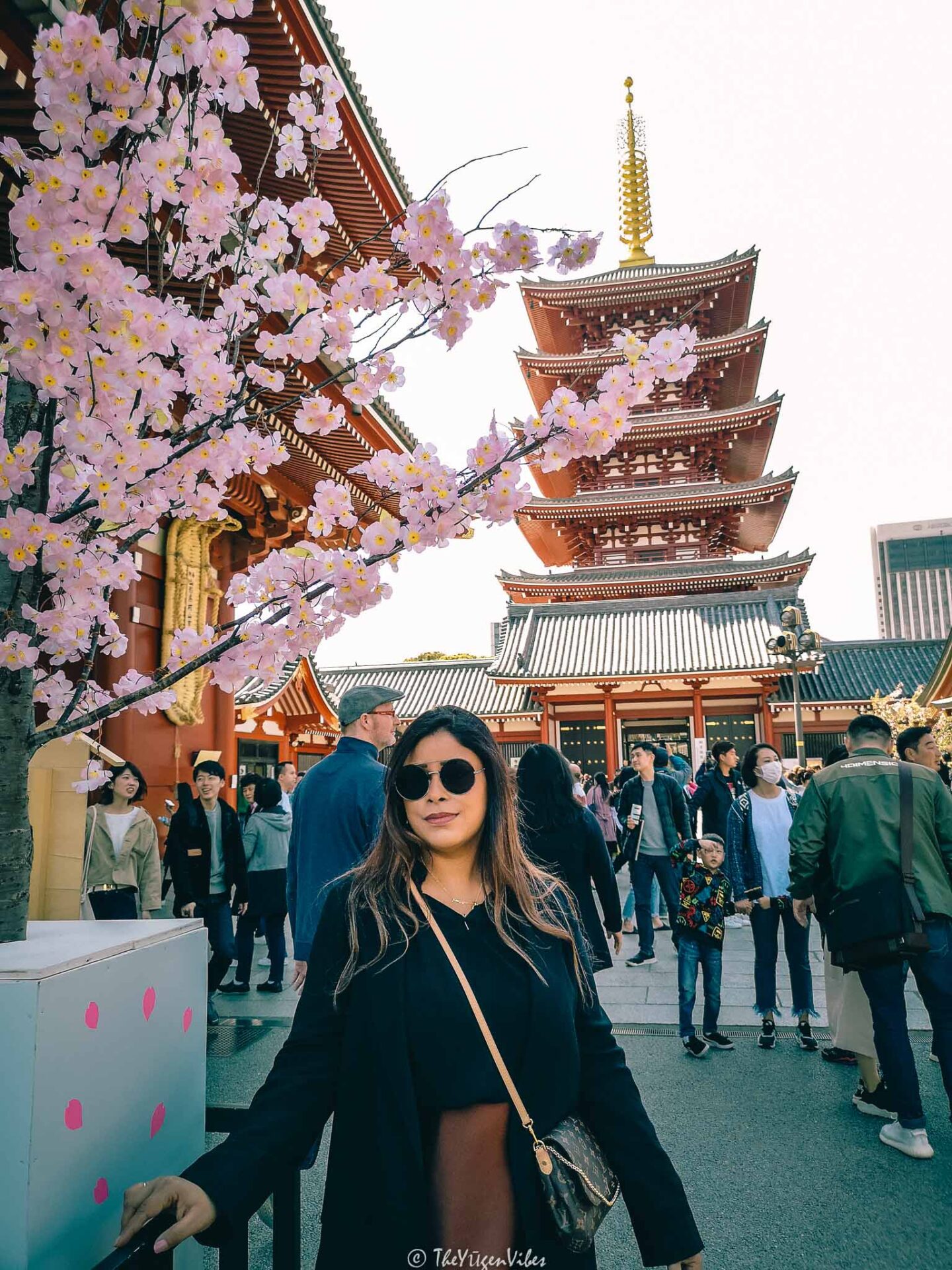
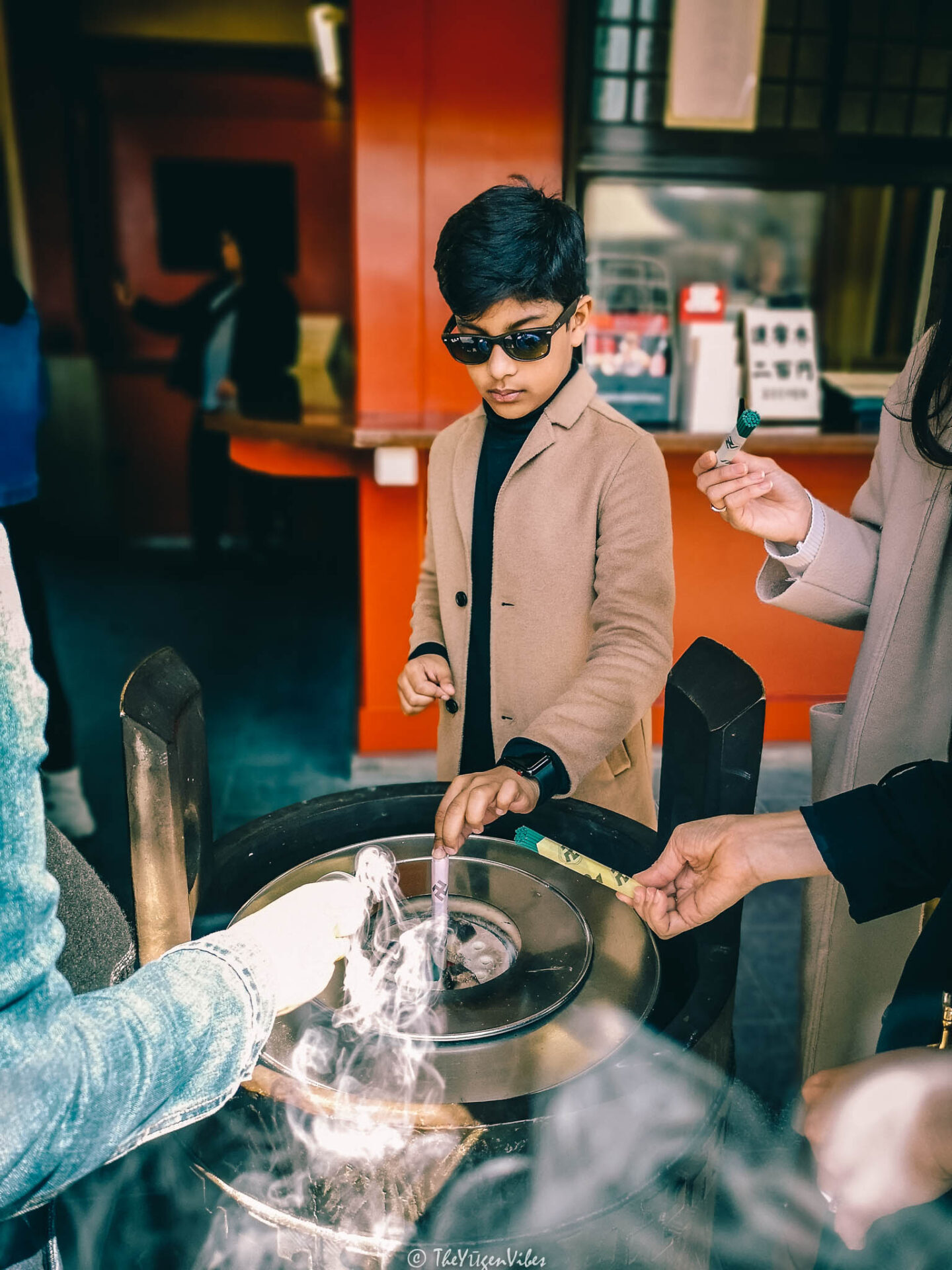

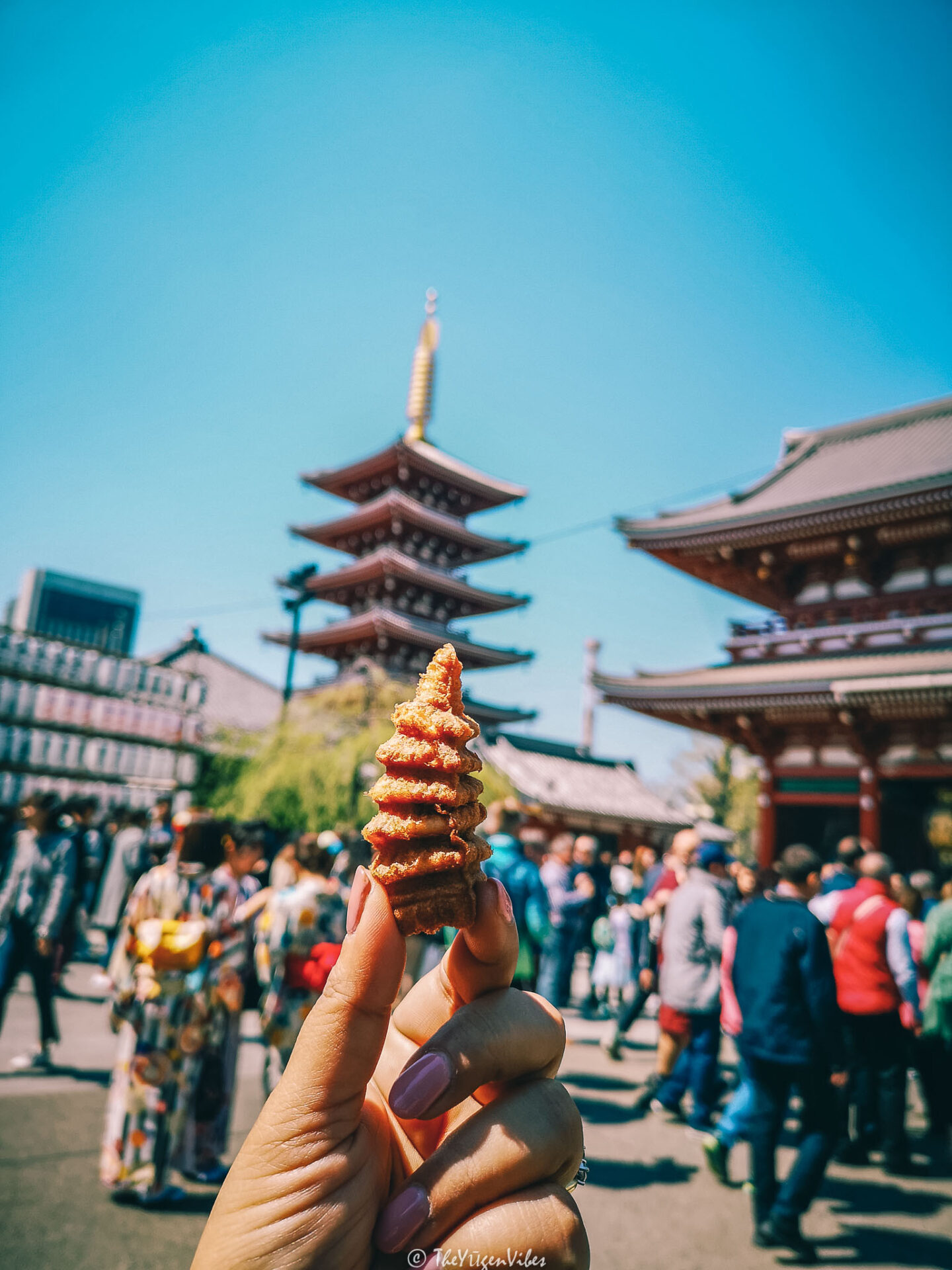
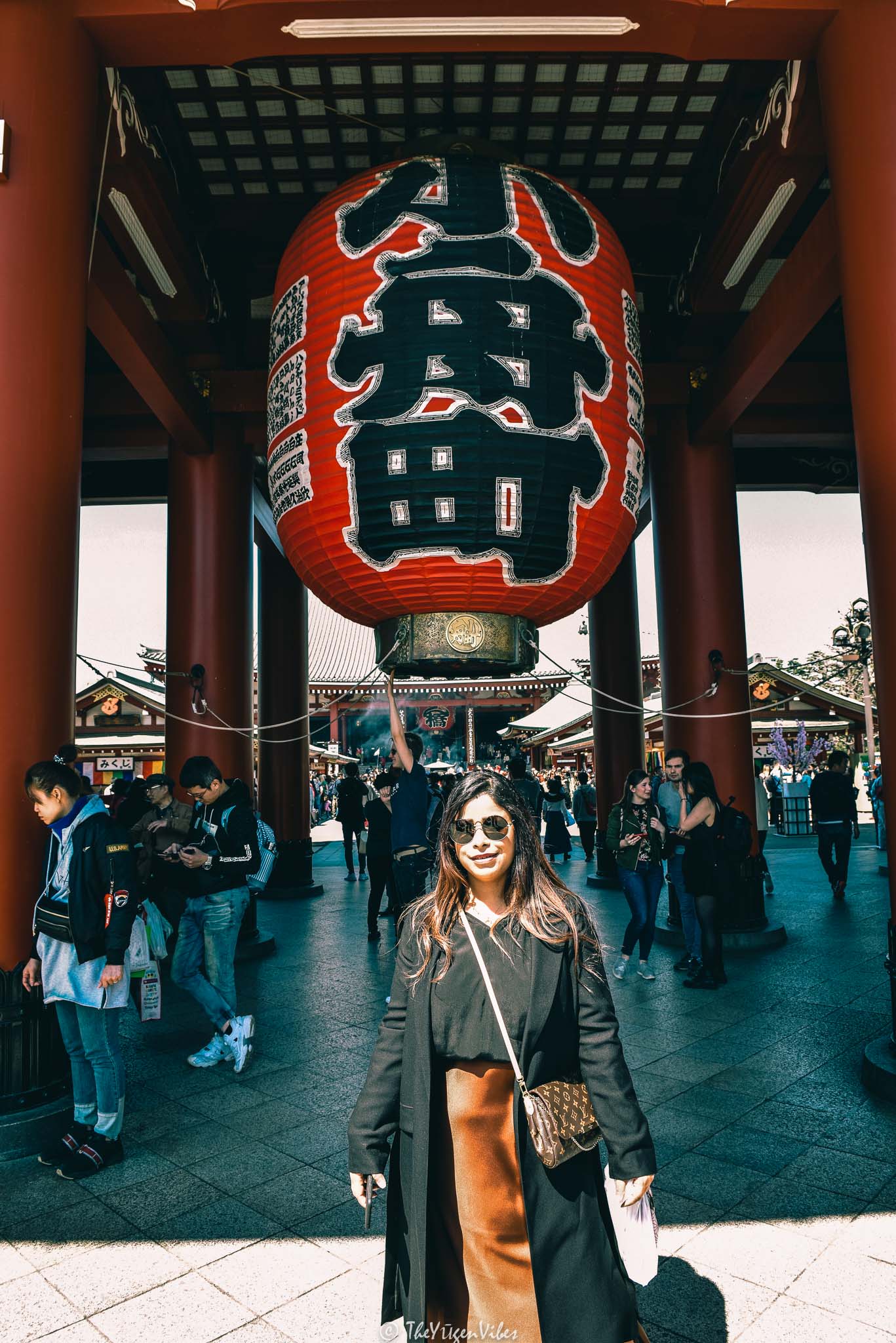
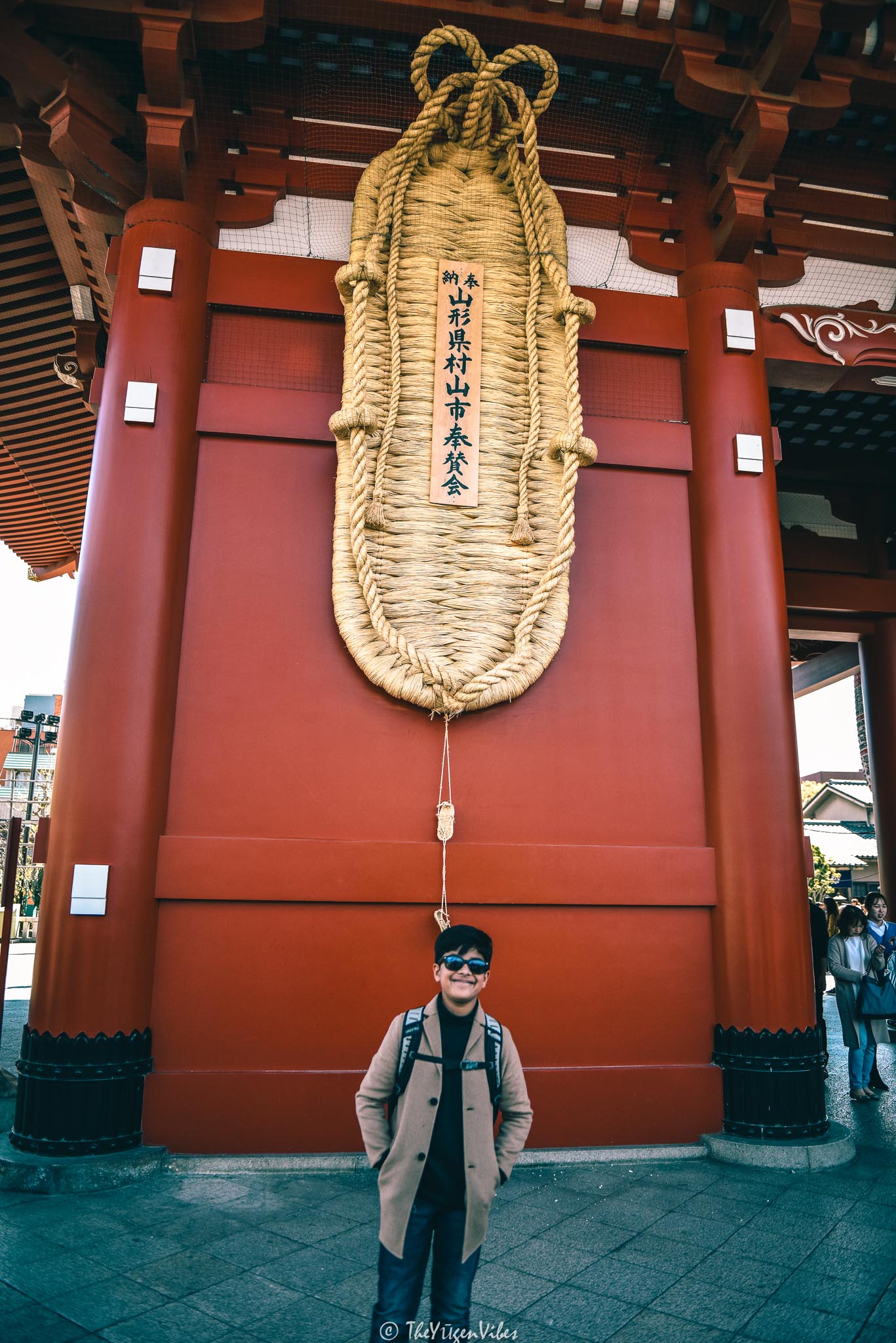
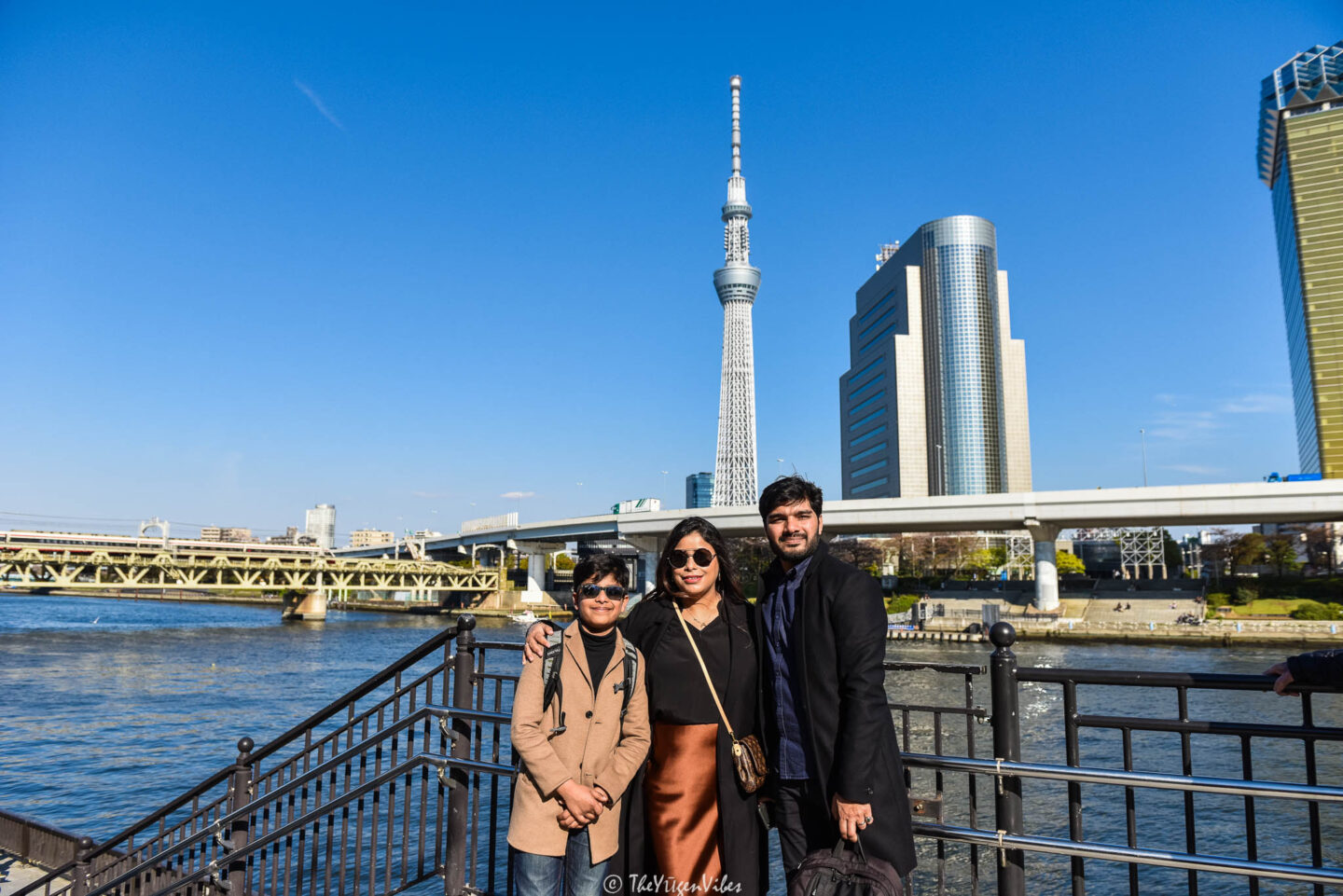
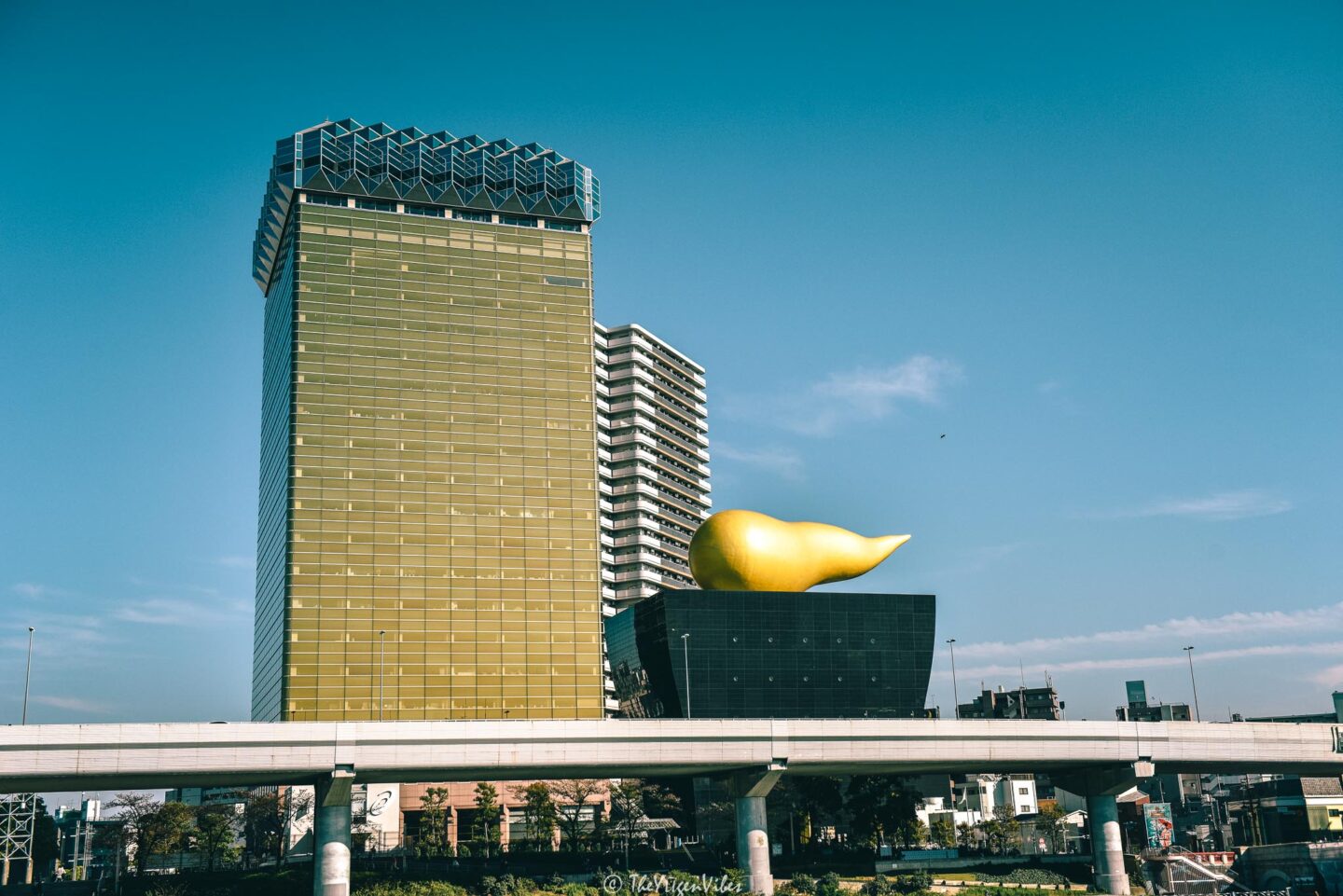
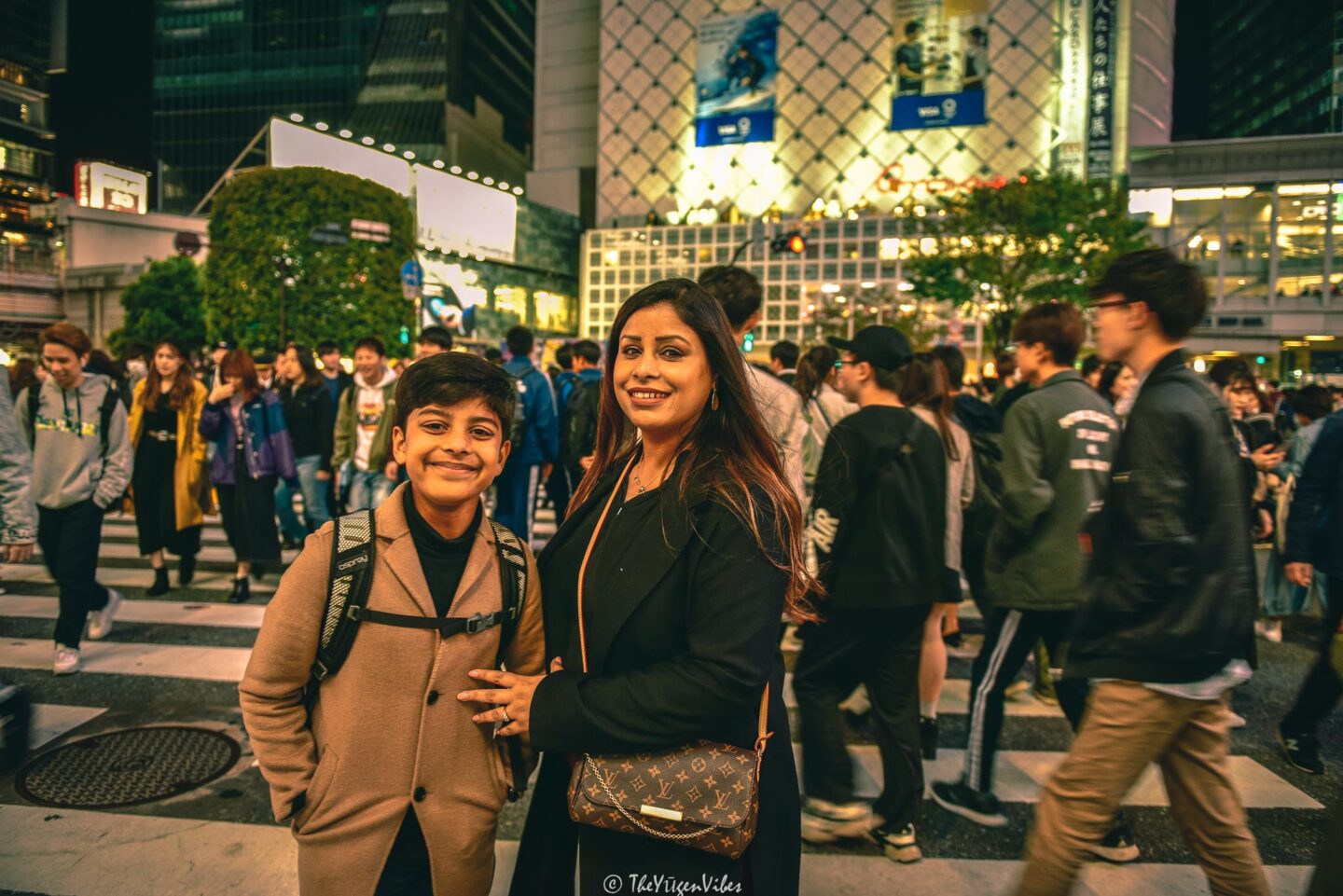
Thanks for the useful info🙏🙏
Author
Cheers 🙏
I want to go and visit this incredible word…thank you for the useful information.
Author
Cheers 🙏